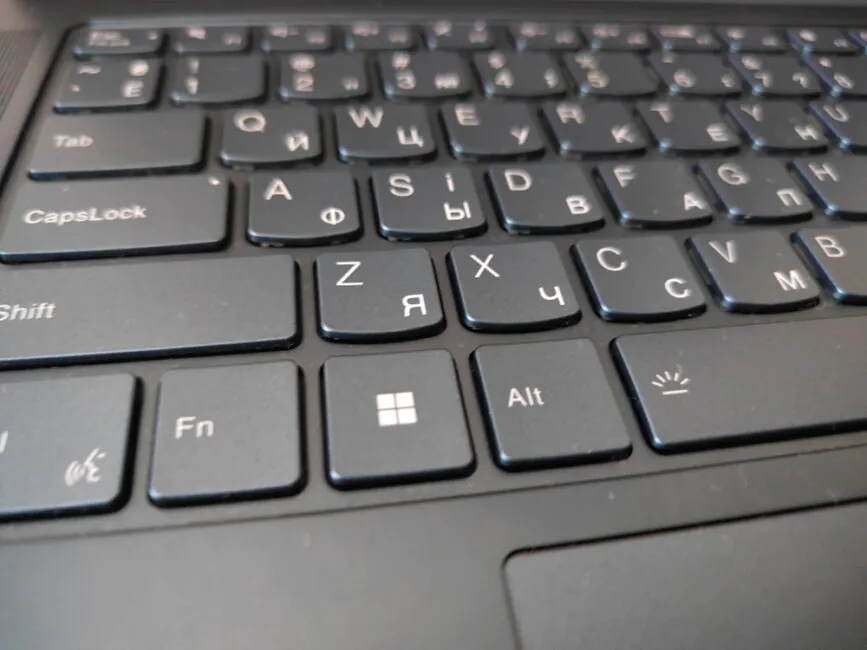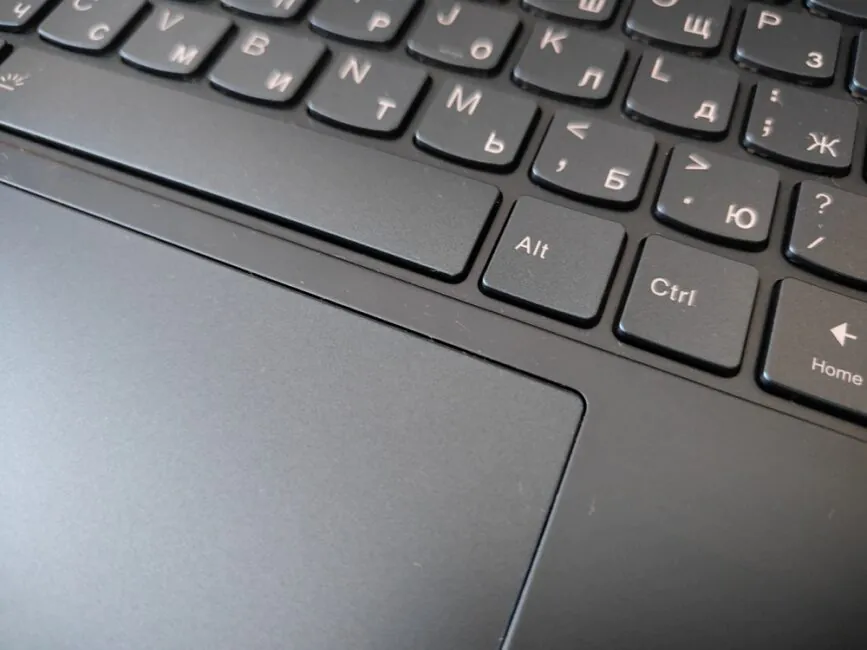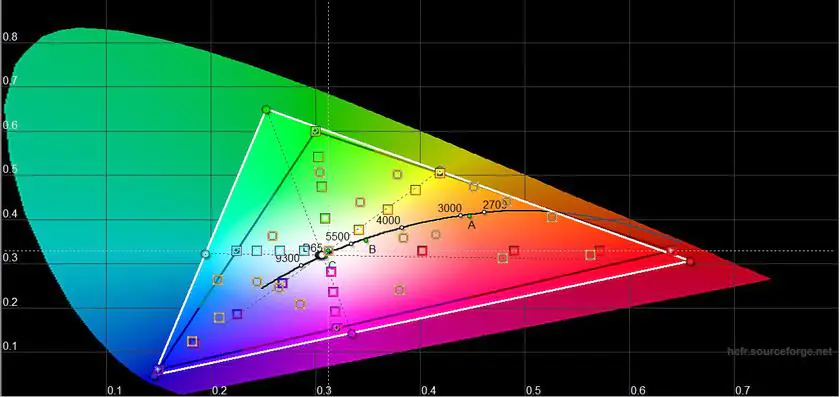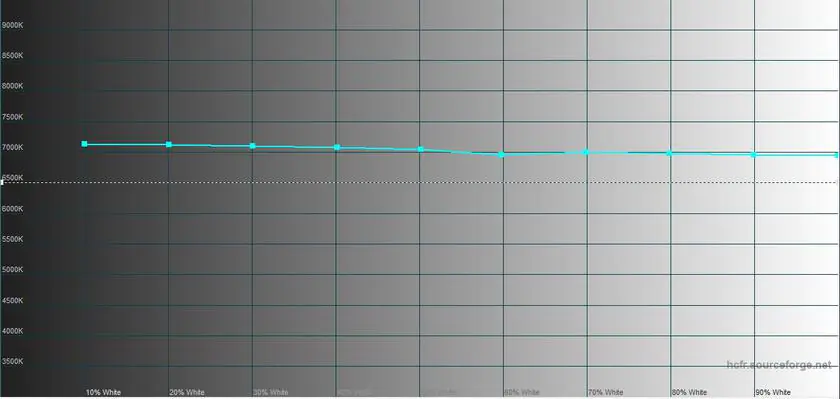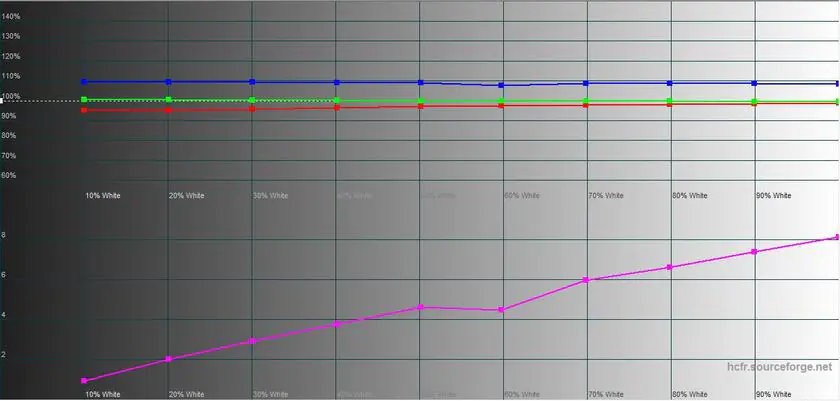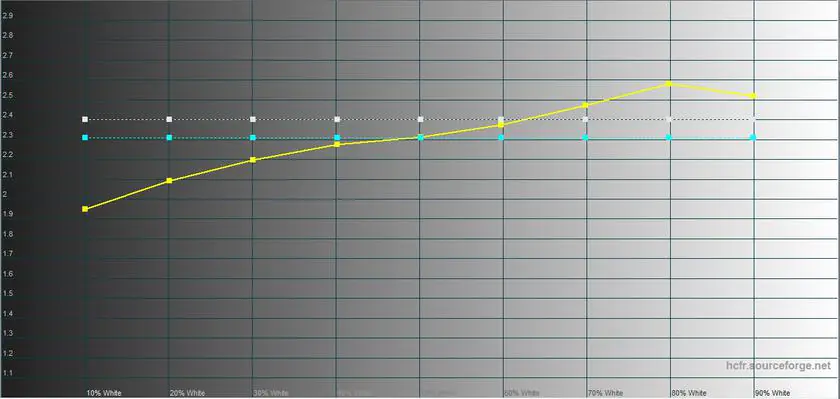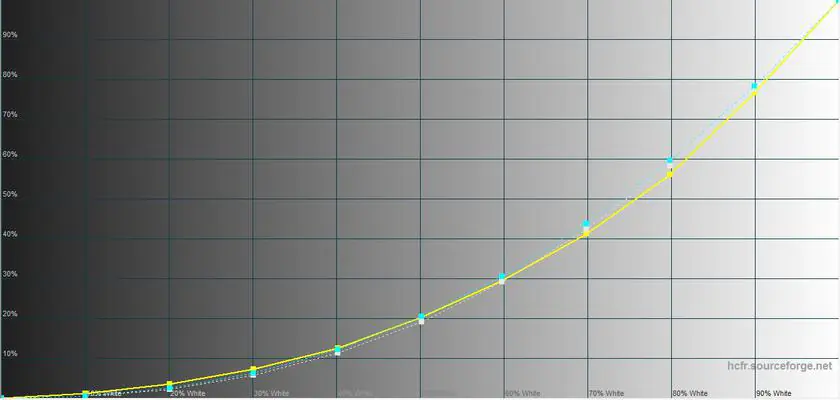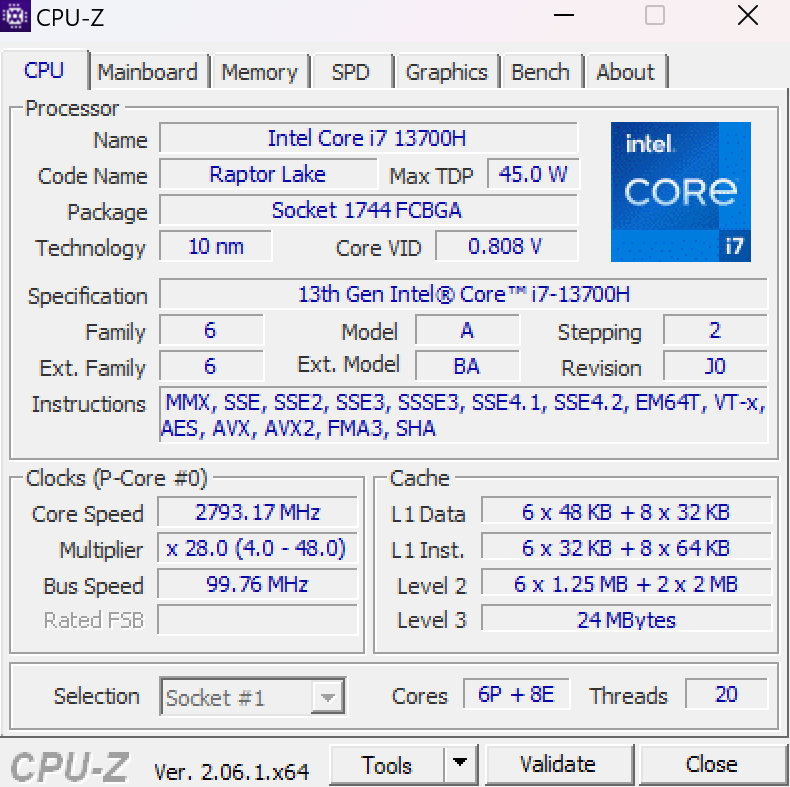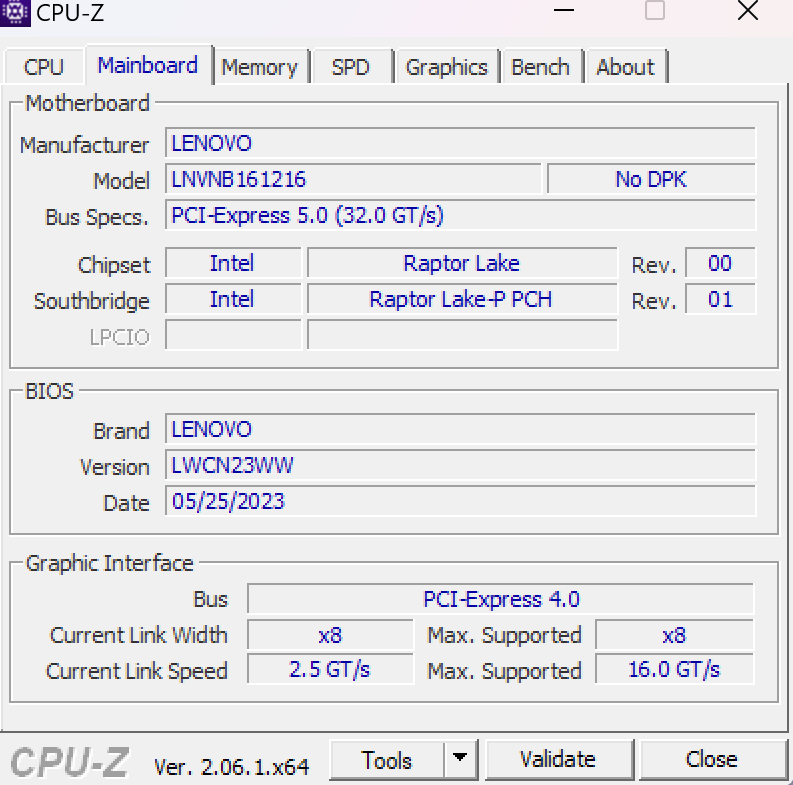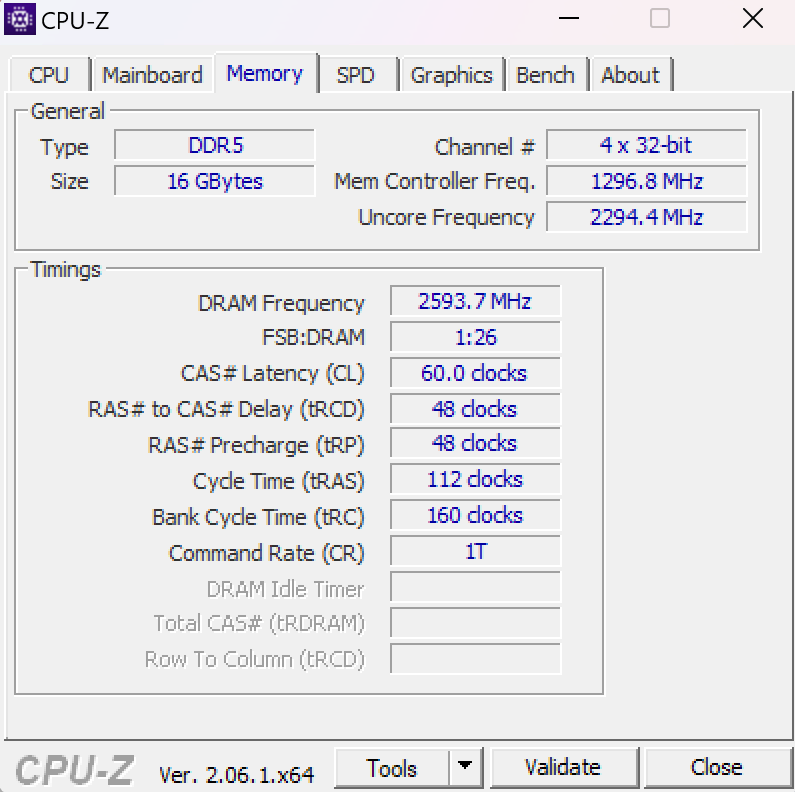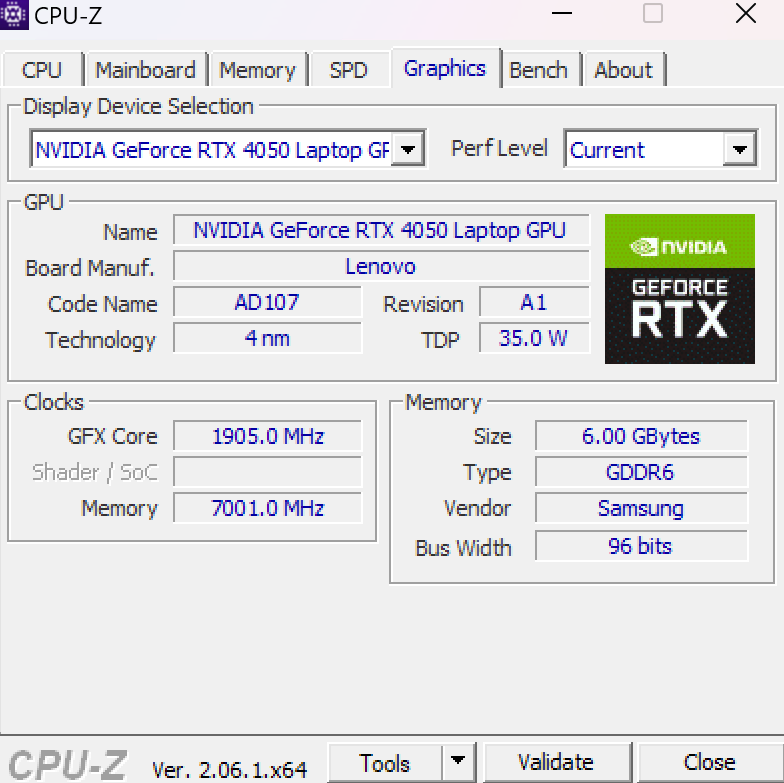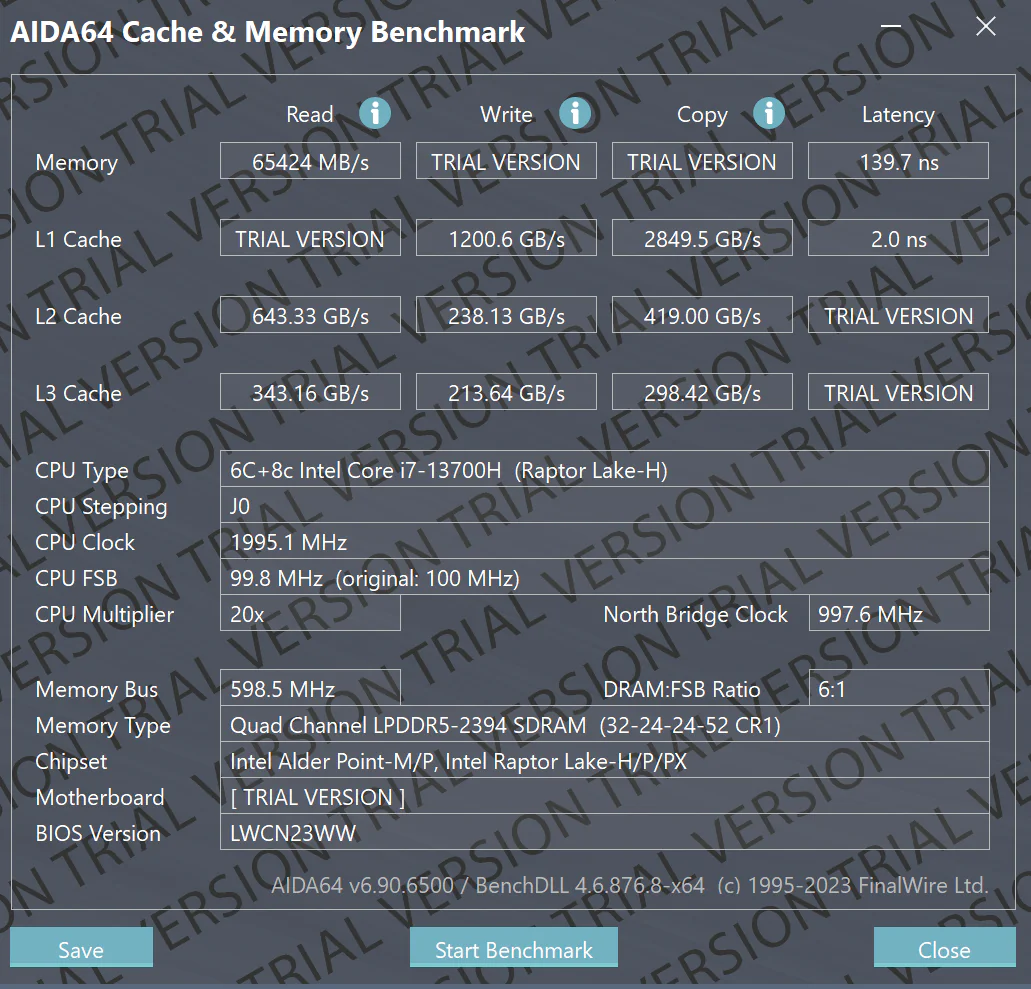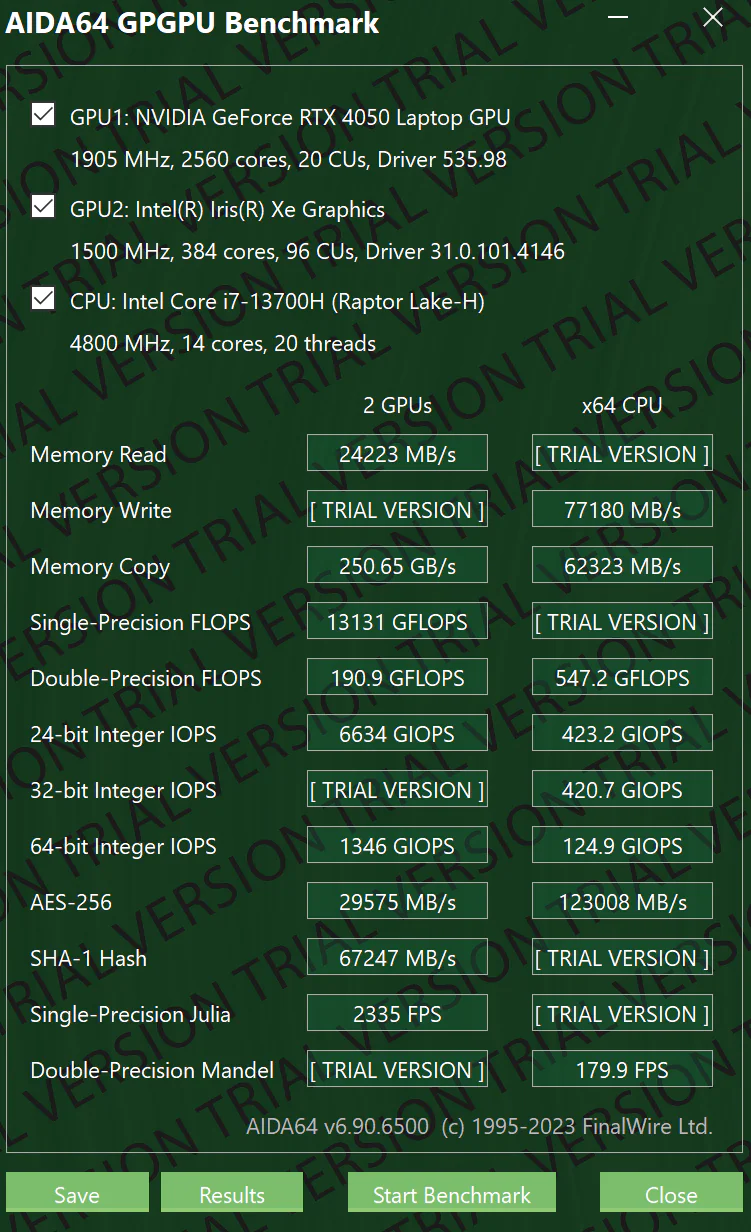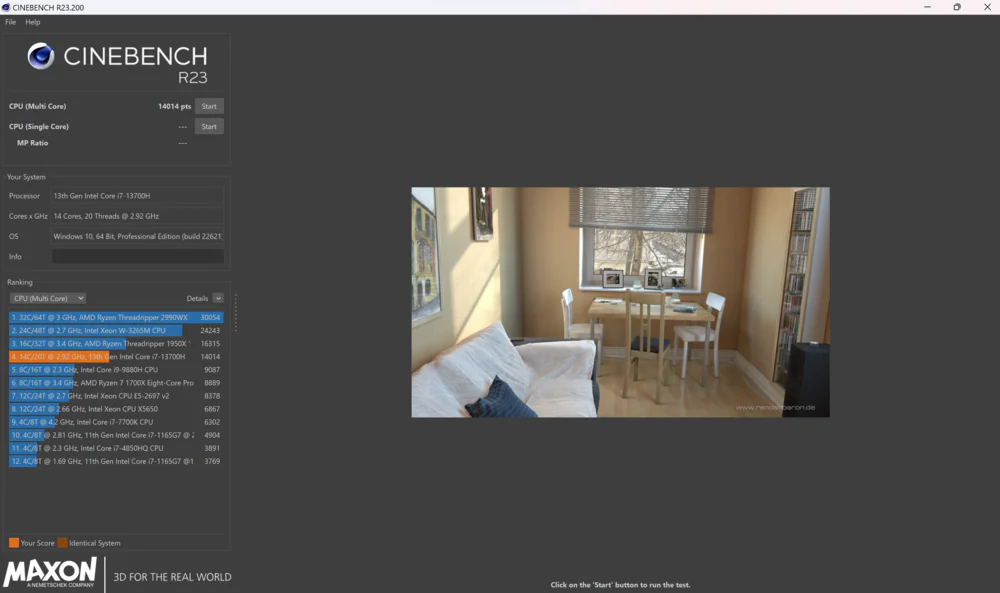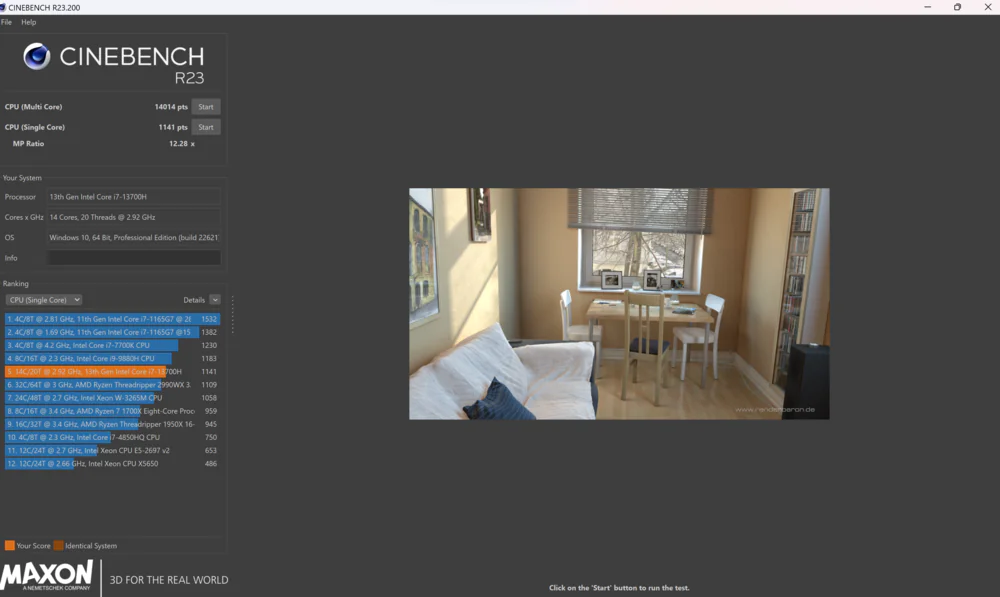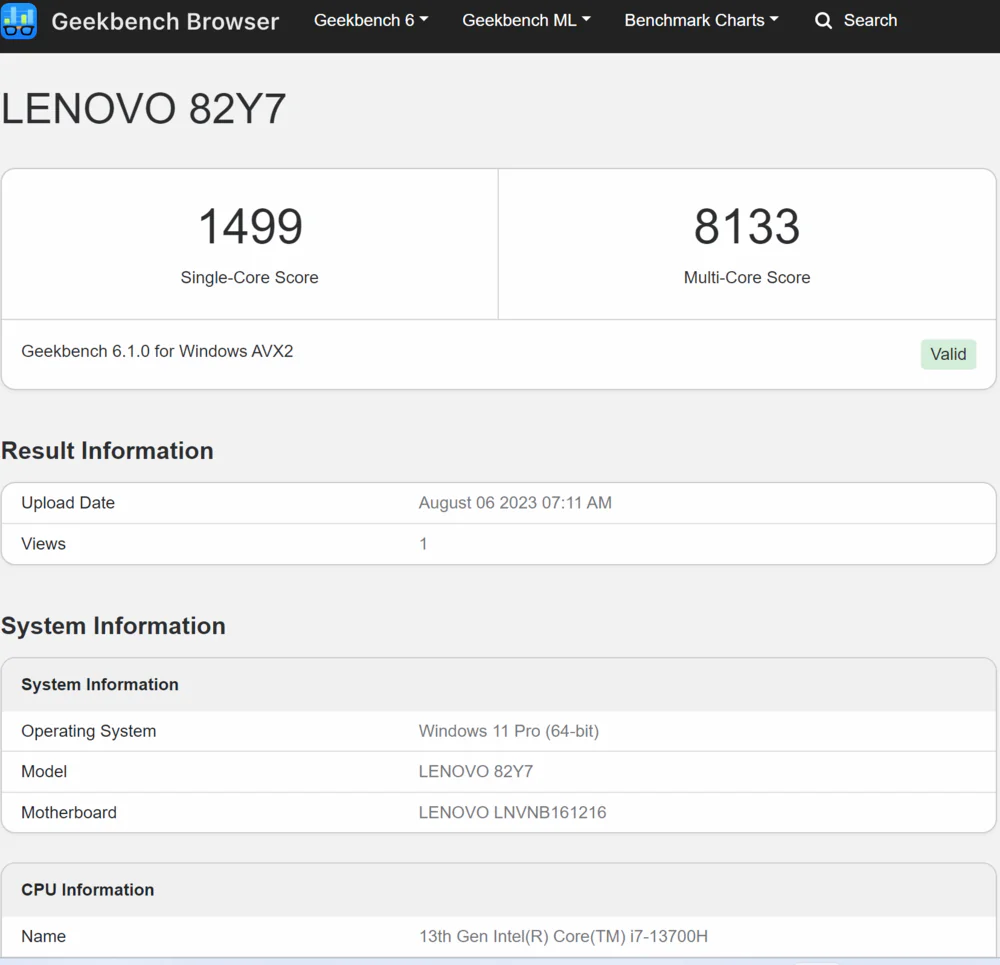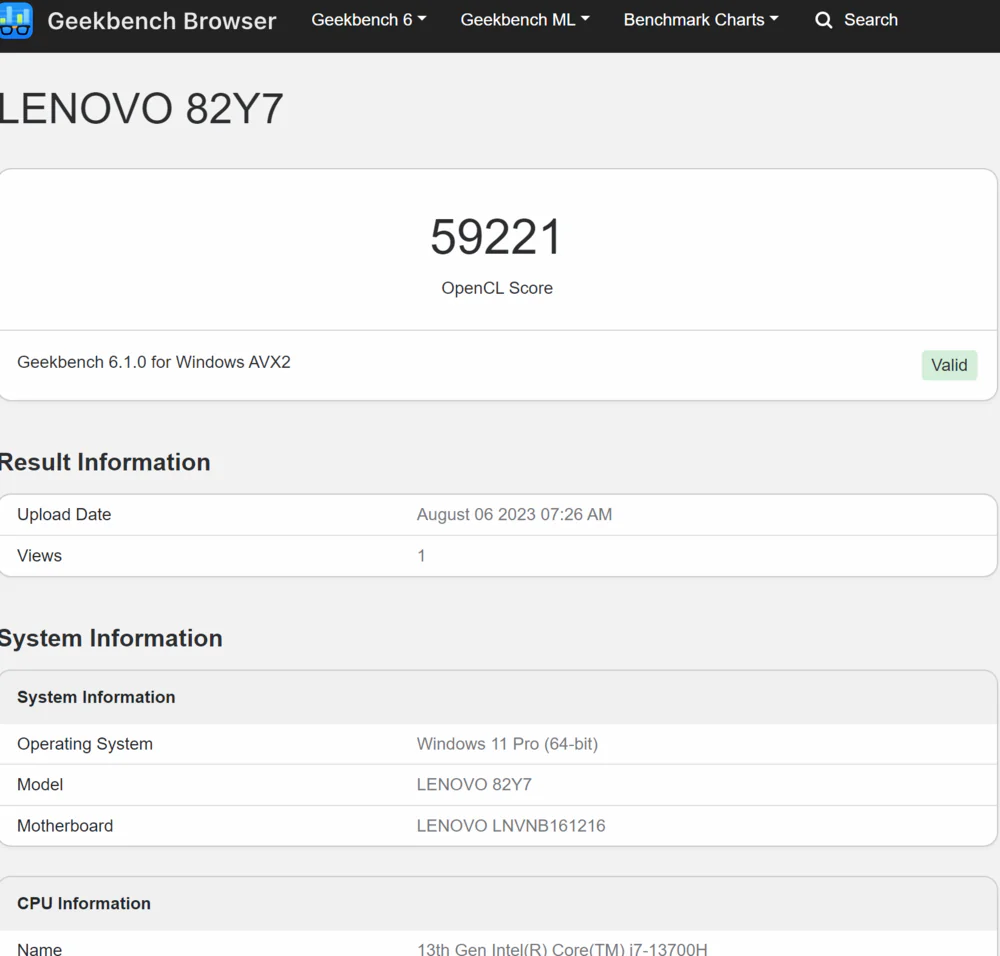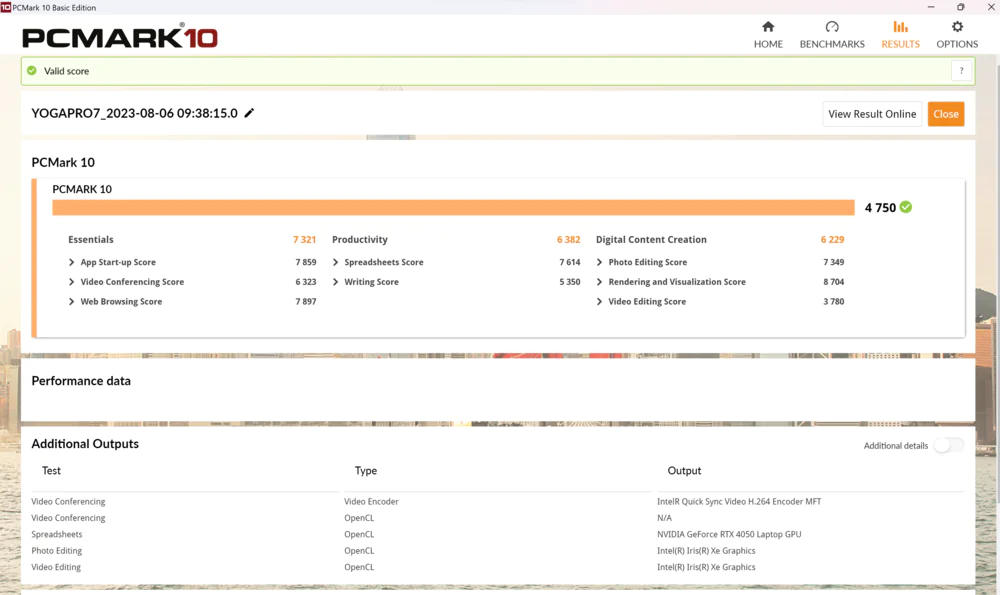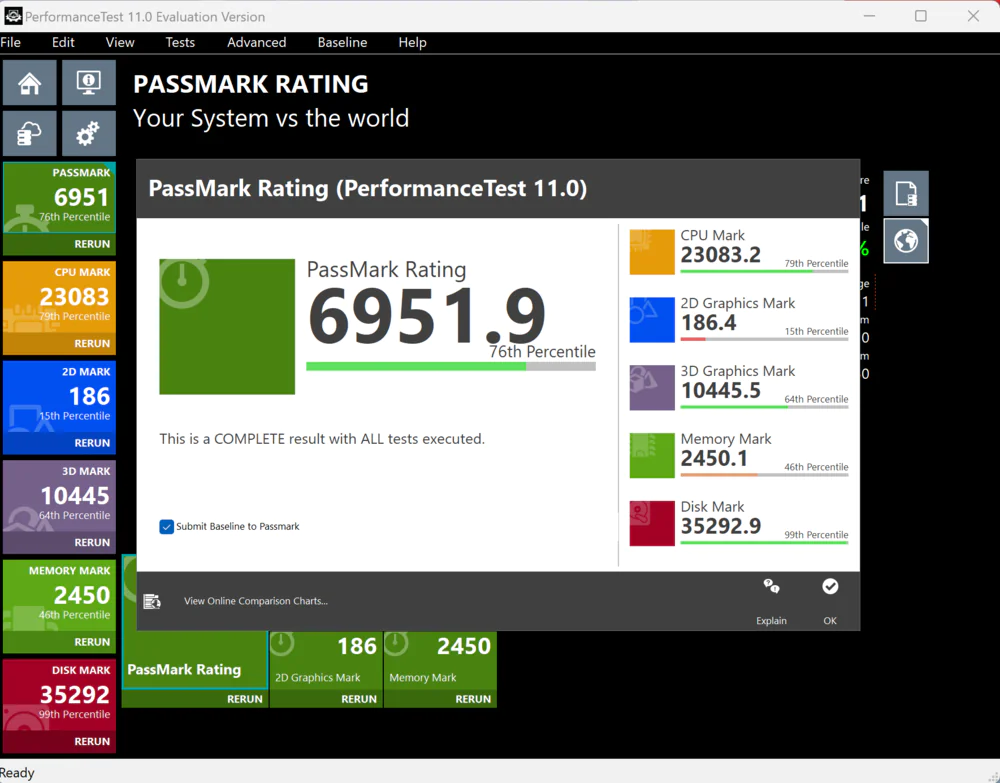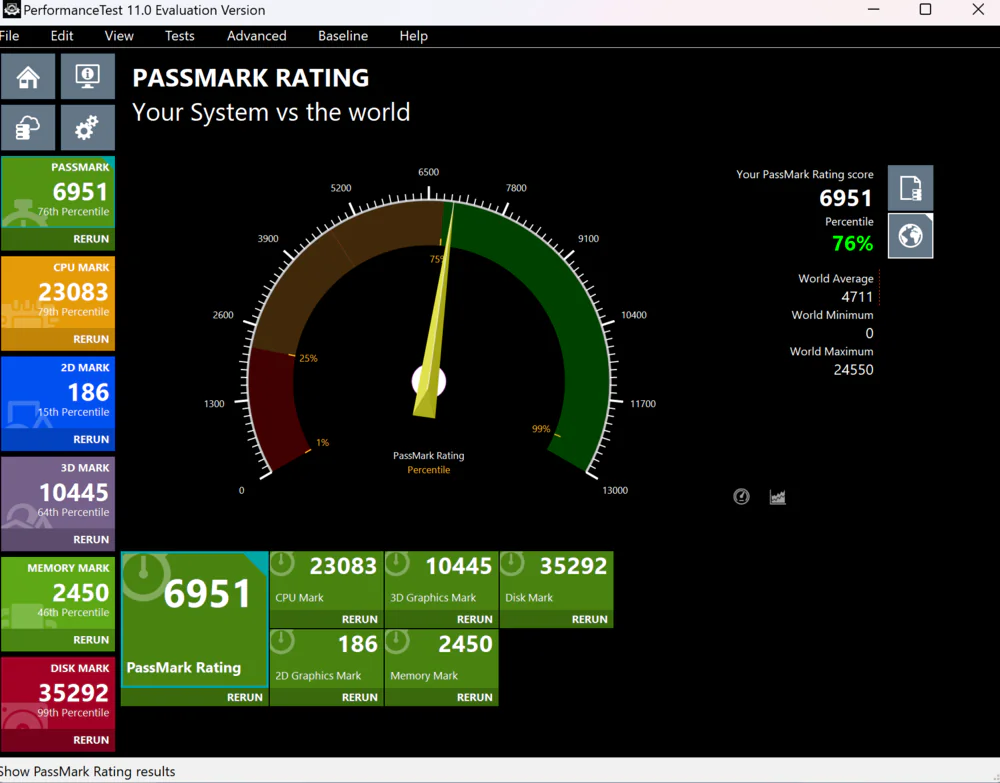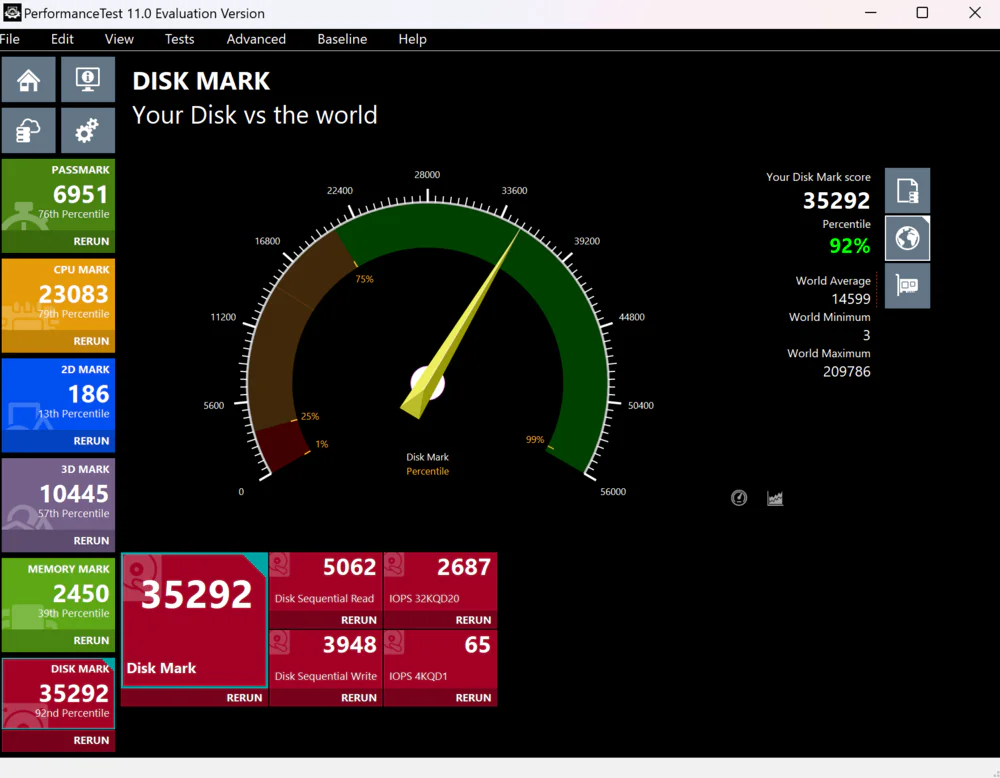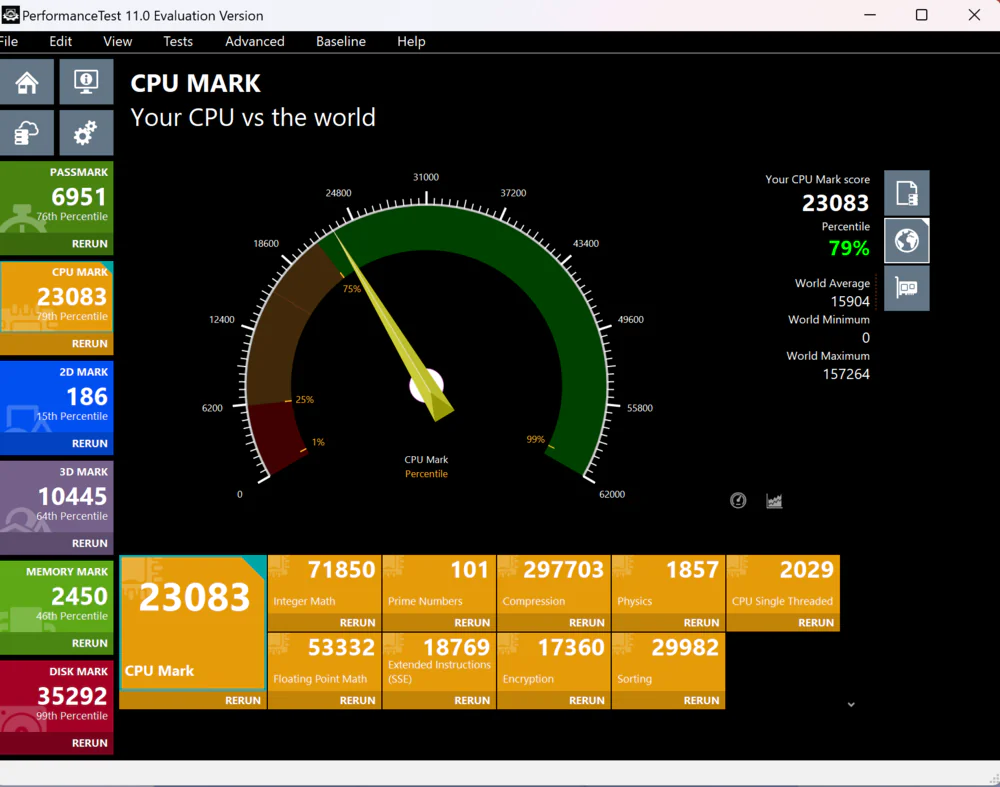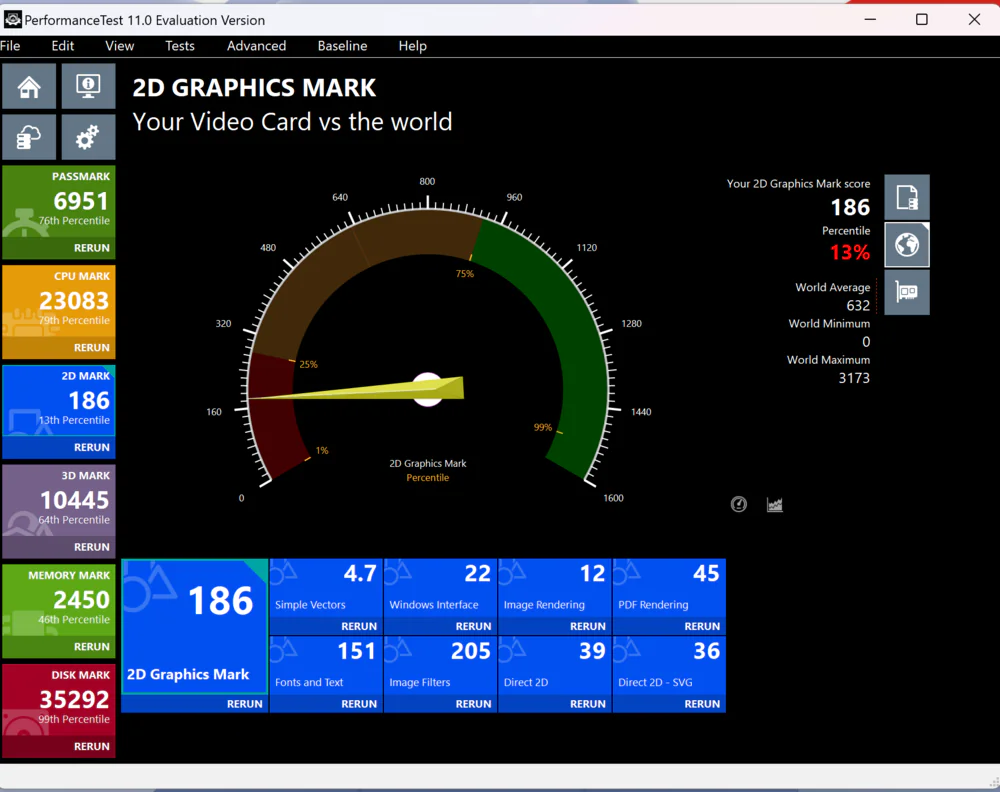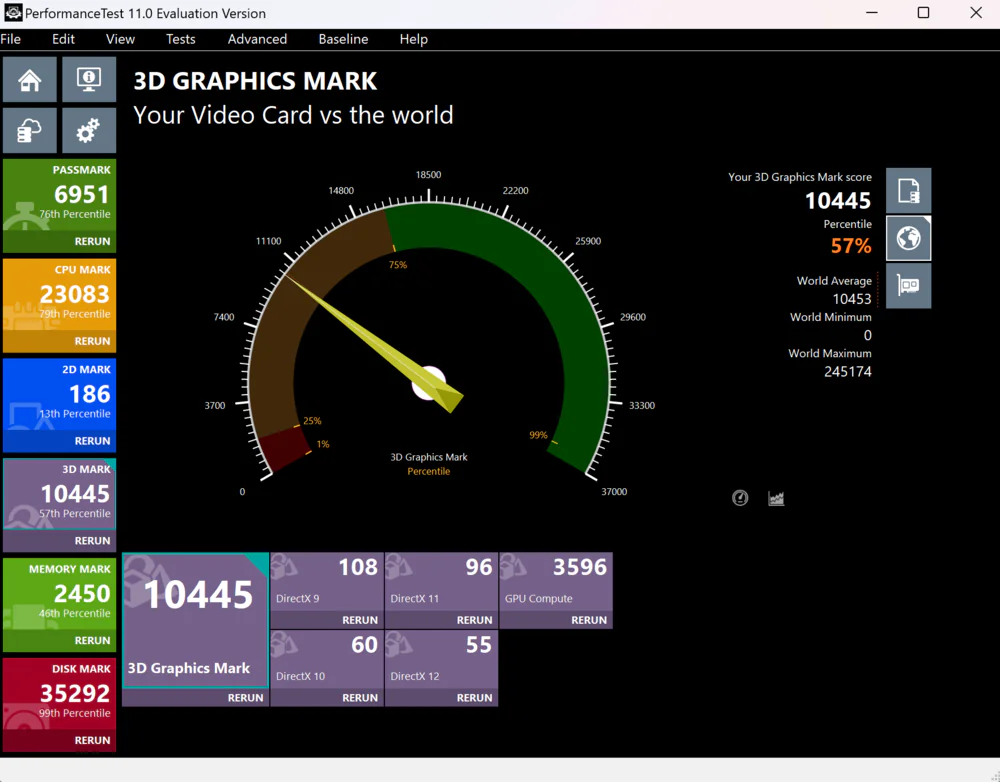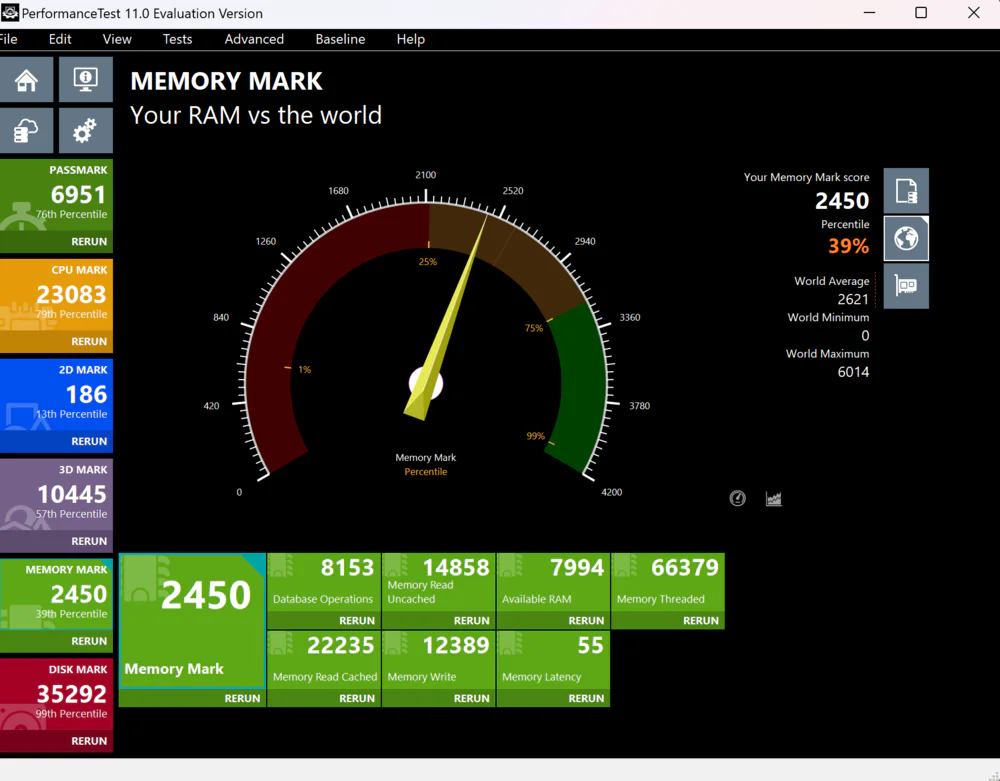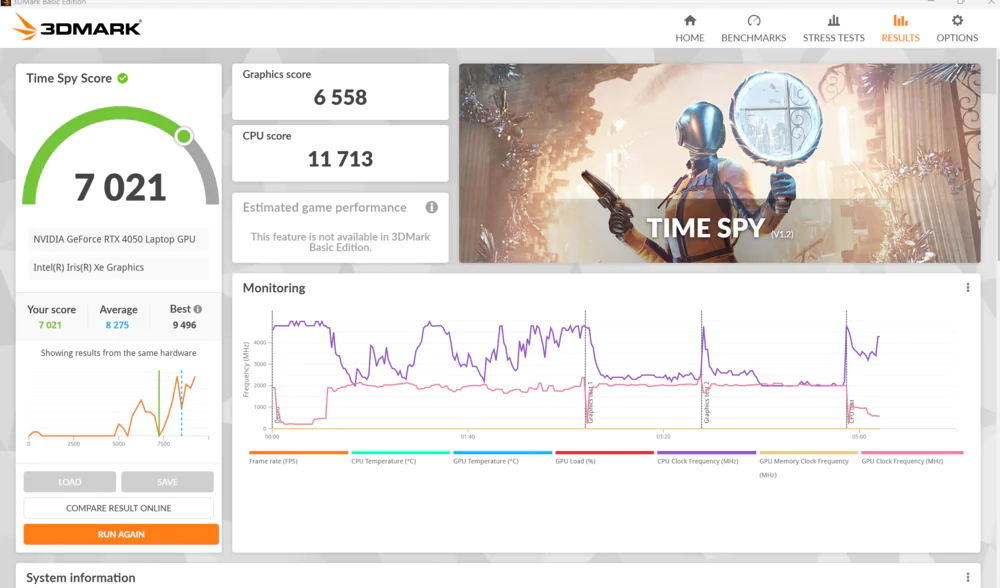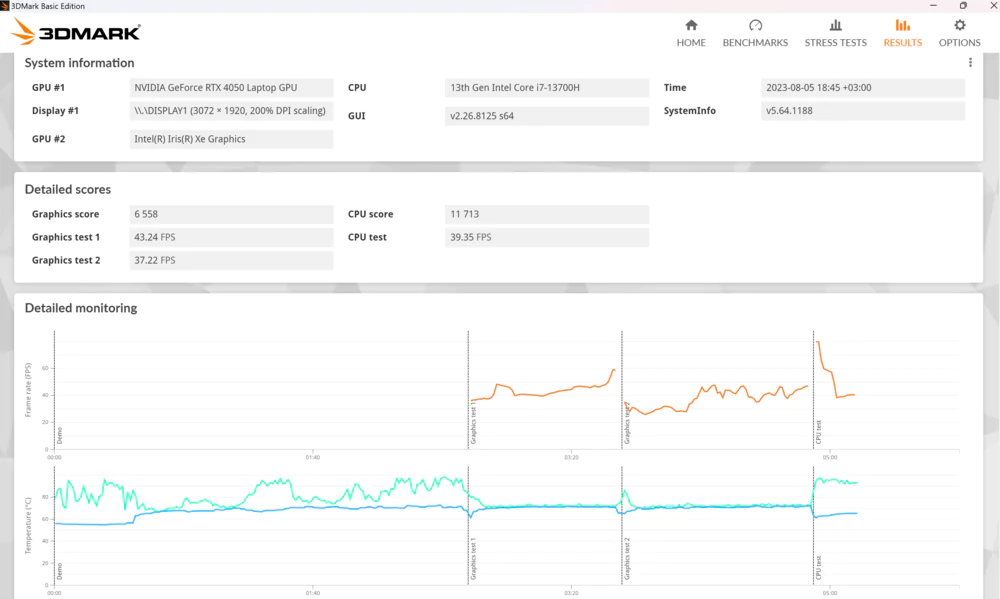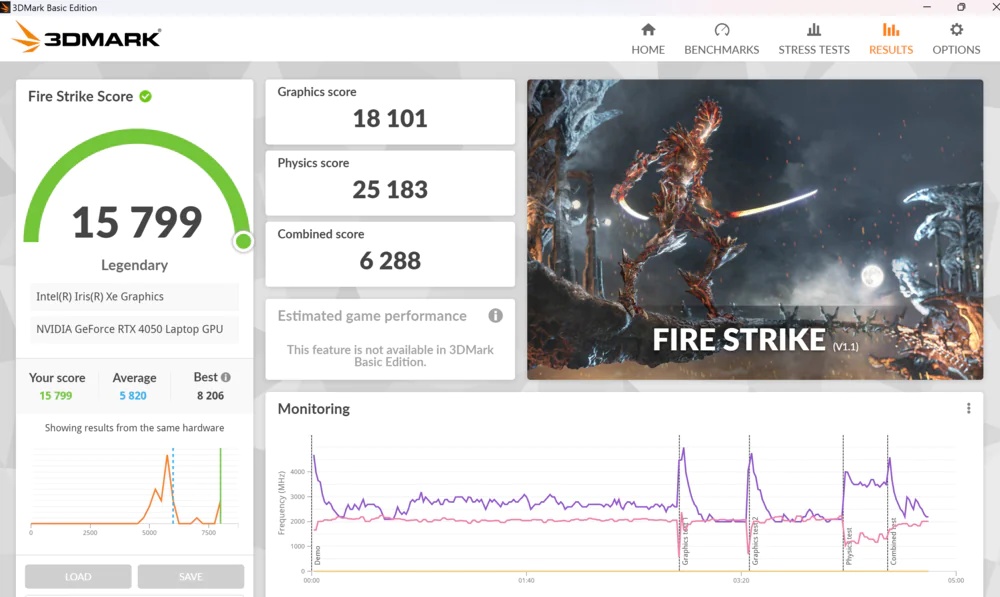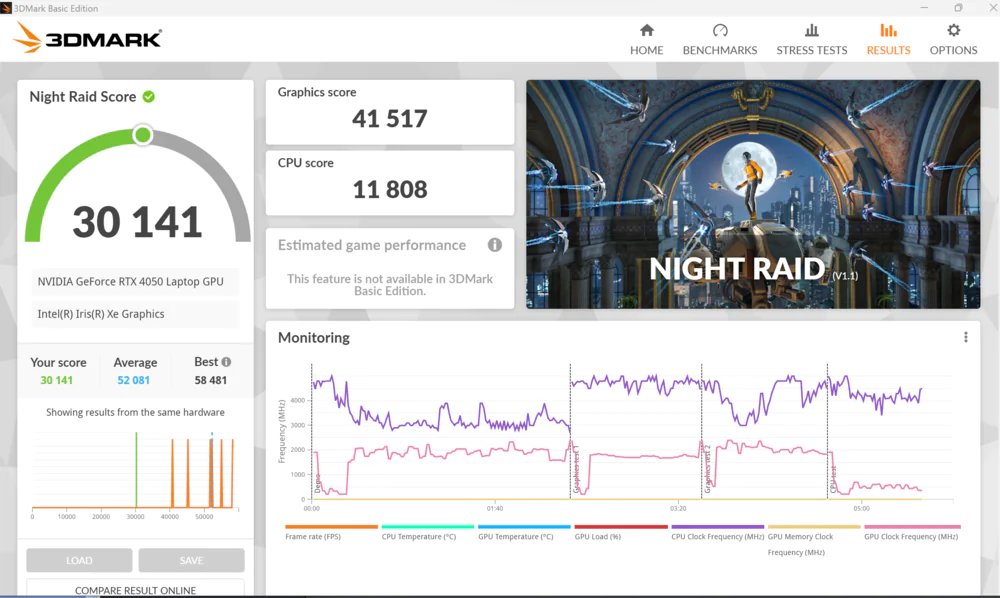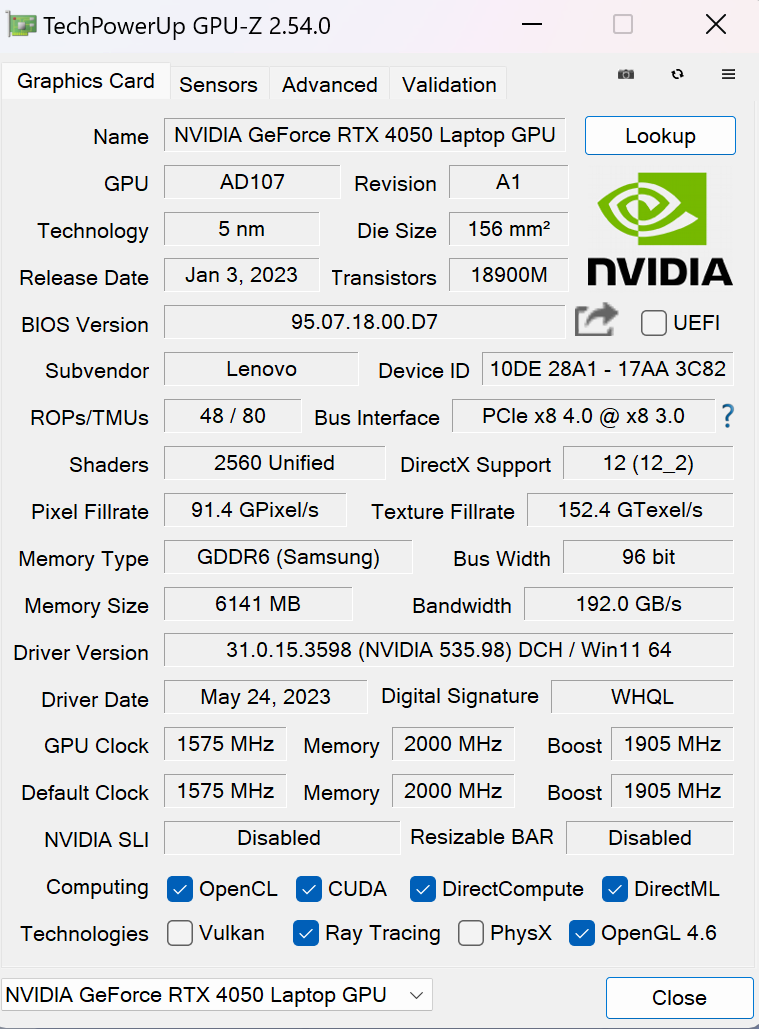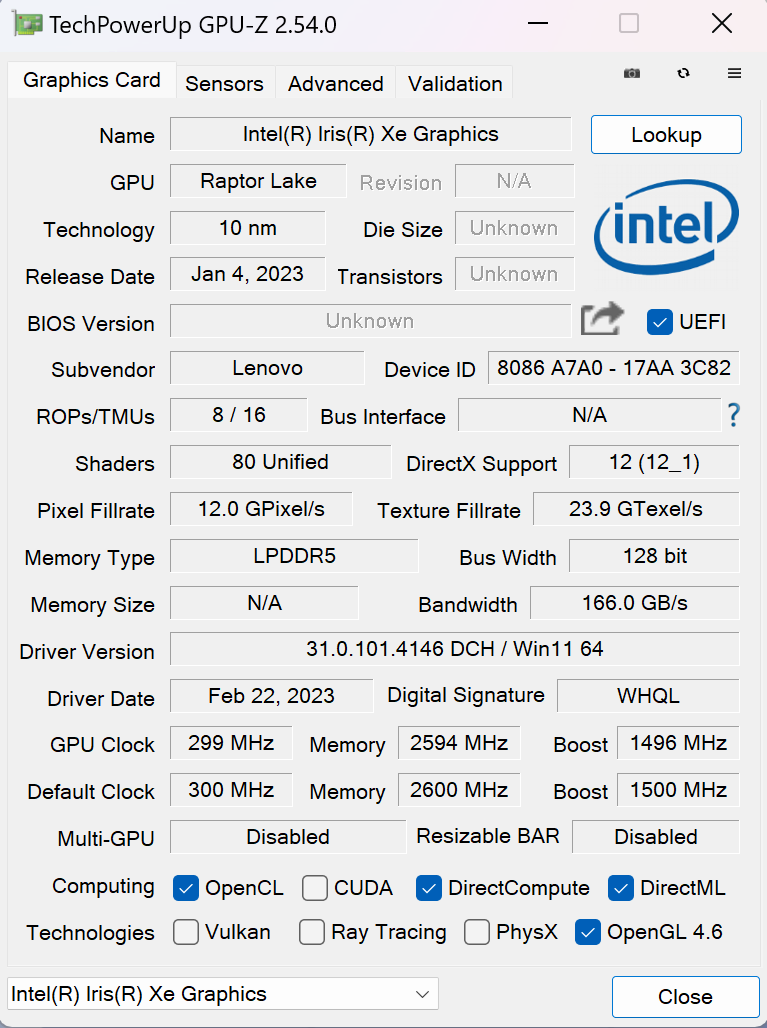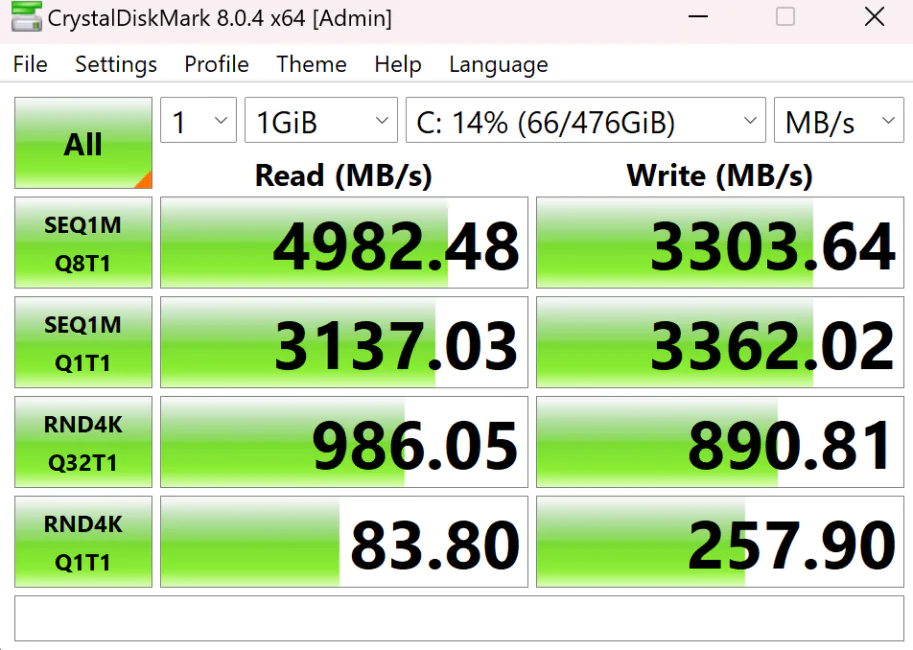© ROOT-NATION.com - Use of content is permitted with a backlink.
The Lenovo Yoga Pro 7 14IRH8 is a truly powerful multimedia laptop with a discrete Nvidia RTX 4050 graphics card, 120Hz matte 3K display and full DCI-P3 coverage.
The Lenovo Yoga series of laptops has always been appreciated by fans for its sleek design, technical equipment, excellent keyboard and functionality. I’ll be honest with you, I really like the laptops in this series from Lenovo too.
Usually, when you think of a Yoga laptop, you think of a Lenovo 2-in-1 that’s sure to have great build quality. While the latter statement is still true, not many Yoga devices remain convertible. Now the company has decided to add another sub-brand to its laptop range with the Yoga Pro series. According to Lenovo, this model is designed for entry-level gamers and creatives who are often on the go. This device not only expands the Lenovo Yoga series, but also sets new standards for laptops in this price segment.
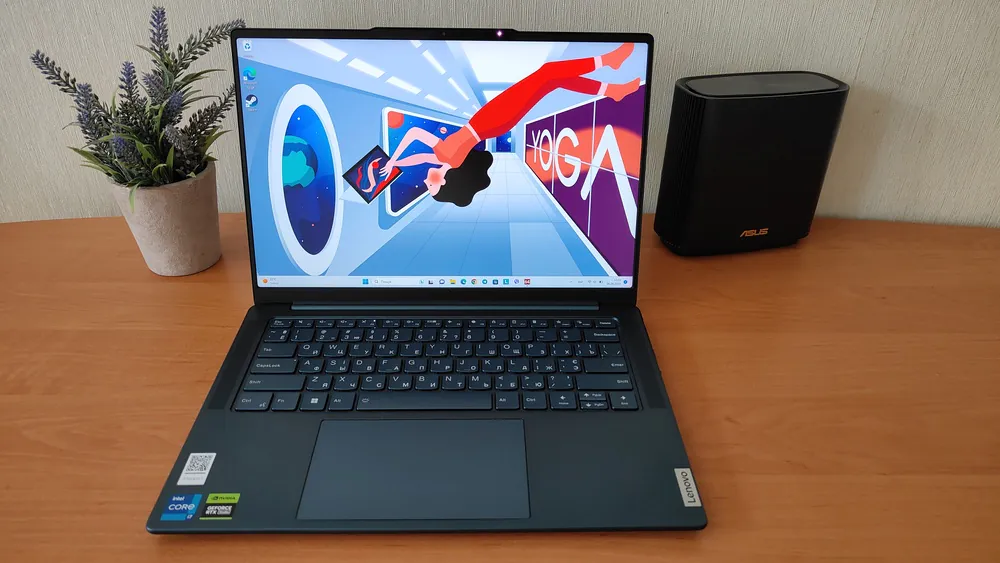
I really wanted to test the new product from Lenovo, to feel the incredible charm of the Yoga Pro series again. When Lenovo Ukraine offered to test their new Lenovo Yoga Pro 7 14IRH8, I agreed with great pleasure. It was an incredible three weeks of work, entertainment, gaming, and media content. I invite you to join me and read the review of this wonderful powerful multimedia laptop.
Read also: Acer Nitro 5 AN515-47 2023 Laptop Review
What is interesting about Lenovo Yoga Pro 7 14IRH8
For demanding users, the Lenovo Yoga Pro 7 is a thin and light laptop that combines powerful hardware with a first-class display and elegant design. Lenovo Yoga Pro 7 impresses with its sturdy all-metal aluminium construction with a 15.6 mm profile and a weight of just 1.49 kg. Together with its long battery life, it’s the perfect computer to use on the go.
The stunning 14.5-inch 3K (3072×1920) display with 16:10 aspect ratio, thin bezels, 120Hz refresh rate and 100% DCI-P3 colour space coverage offers stunning colours and precise detail. A dedicated NVIDIA GeForce RTX 4050 graphics card is supported. This allows you to enjoy even demanding games and multimedia applications with Lenovo Yoga Pro 7.
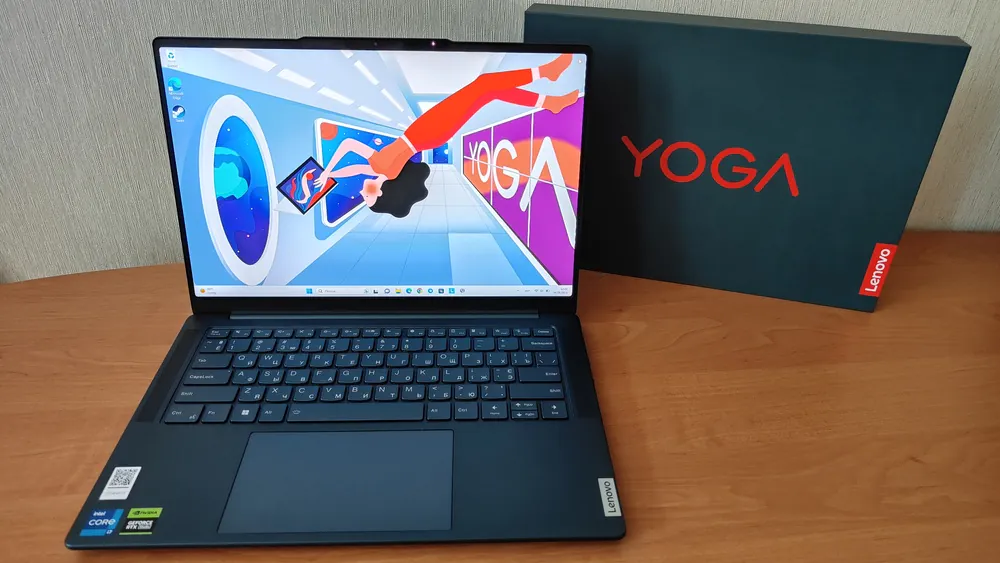
Add to this the powerful Intel Core i7 13700H Raptor Lake processor, which uses fast 16GB LPDDR5 RAM. The capacious SSD drive provides you with enough capacity to store all your large files, movies and photos. A near-perfect laptop for creatives and those looking for a powerful work machine in an elegant package.
Of course, all this pleasure is worth a good price. Although Lenovo managed to surprise me here as well. So Lenovo Yoga Pro 7 can be bought in Ukrainian stores starting at $1350, depending on the configuration.
Lenovo Yoga Pro 7 14IRH8 specifications
- Processor: Intel Core i7-13700H, 8 cores (in maximum configuration)
- Operating system: Windows 11 Pro
- Display: 14,5” 3K (3072×1920) IPS, 400 nits
- Graphics: up to NVIDIA GeForce RTX 4050
- RAM: up to 32 GB
- Storage: SSD up to 1 TB
- Audio system: 4 × Dolby Atmos with 2W power
- Ports: 2 × USB 3.2 Gen1, USB-C 3.2 Thunderbolt 4, HDMI, Audio Combo Jack
- Network: WiFi 6E, Bluetooth 5.1
- Dimensions: 325.50 × 226.49 × 15.60 mm
- Weight: 1.49 kg
- Colour: grey (Storm Grey), sea turquoise (Tidal Teal)
As you can see, Lenovo Yoga Pro 7 is a modern, powerful laptop that can be used for work, entertainment, and even modern games.
Read also: Future technologies from Lenovo Legion: intelligent solutions for gamers and creators
What’s in the package?
Lenovo Yoga Pro 7 14IRH8 comes in the standard packaging for devices in this series – a cardboard box with logos on it. You can feel the style right away.
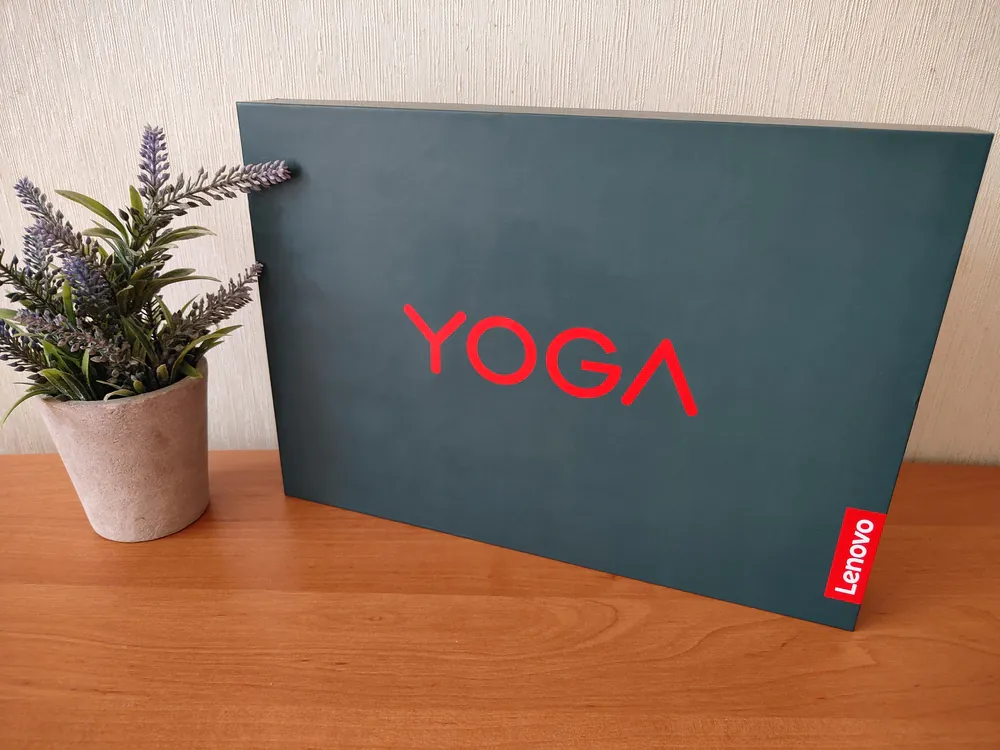
Inside you’ll find the laptop itself and a 140W USB Type-C charger. Not to forget all sorts of paper manuals, instructions, and warranty cards.
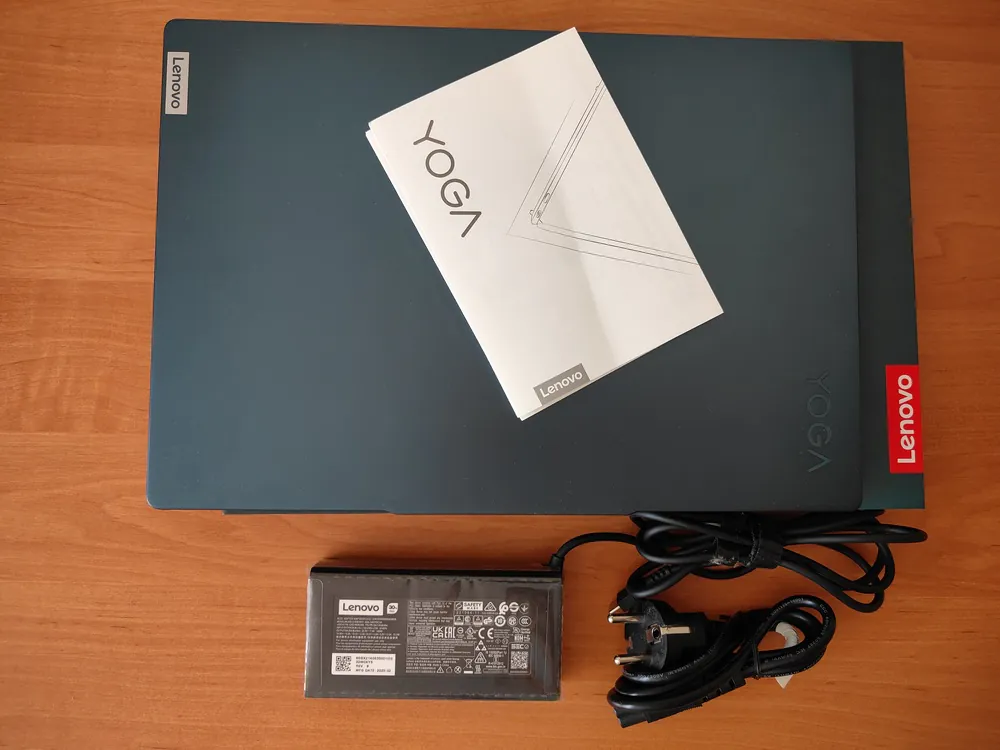
The standard set, nothing more. It’s nice that Lenovo has switched to a USB Type-C charger. Not all manufacturers have decided to do this yet.
Exquisite design
If you’re familiar with Lenovo Yoga laptops, you’ll recognise this design right away. Although the Lenovo Yoga Pro 7 14IRH8 is a bit more chunky than its predecessors. At first glance, it looks like a standard laptop, but you can feel the spirit of the Lenovo Yoga series in it. Its rounded edges at the bottom cannot be confused with anything else. You can feel the elegance and simplicity from the first moment. Yes, this is not a convertible device, which most users of this series are used to. It won’t fold in half or tent on your desktop. Although Lenovo Yoga Pro 7 14IRH8 still has its own charm.
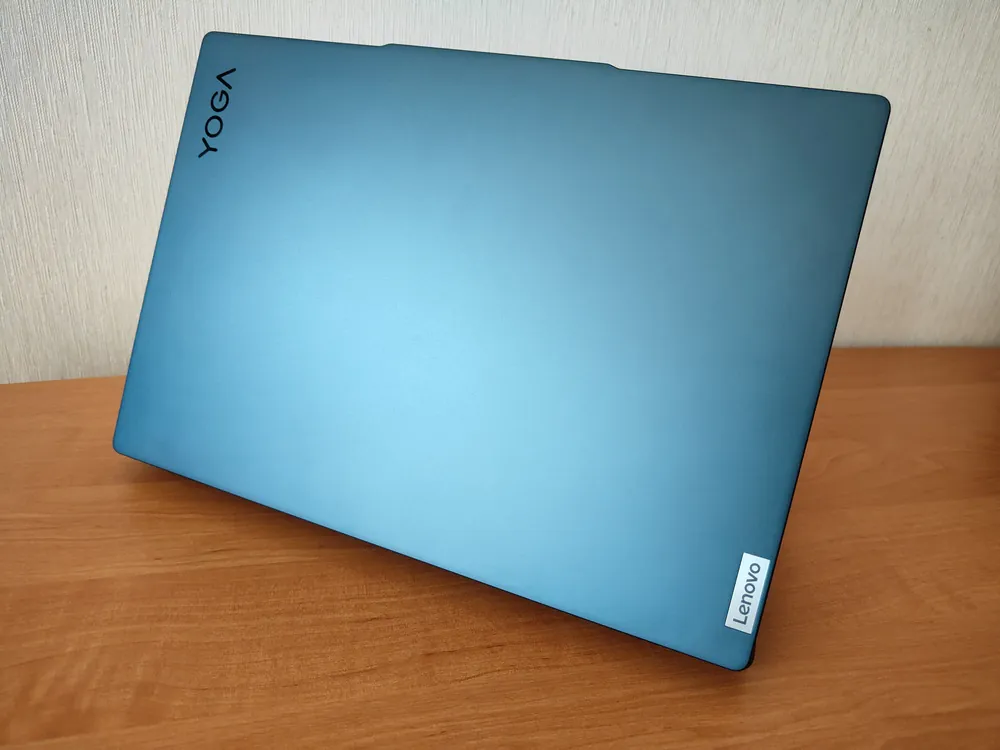
This device is made entirely of aluminium. Both the lid and the base are quite sturdy and resistant to bending. The curved corners make the laptop feel very nice, and the design gives the impression of a premium device.
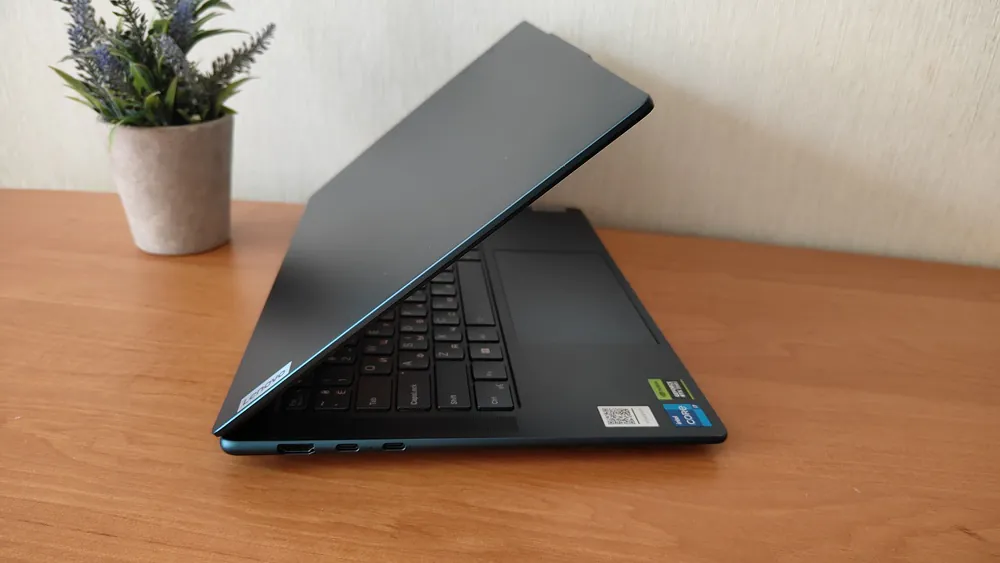
As expected, it is not as thin as machines without a GPU. The device is 15 mm thick and weighs 1.49 kg, but its overall size provides good portability. One can only wonder how the developers managed to fit the NVIDIA GeForce RTX 4050 inside. This means that you can easily take this device with you to the office or to school, and it won’t take up much space on a business trip, but it will definitely be a faithful assistant.
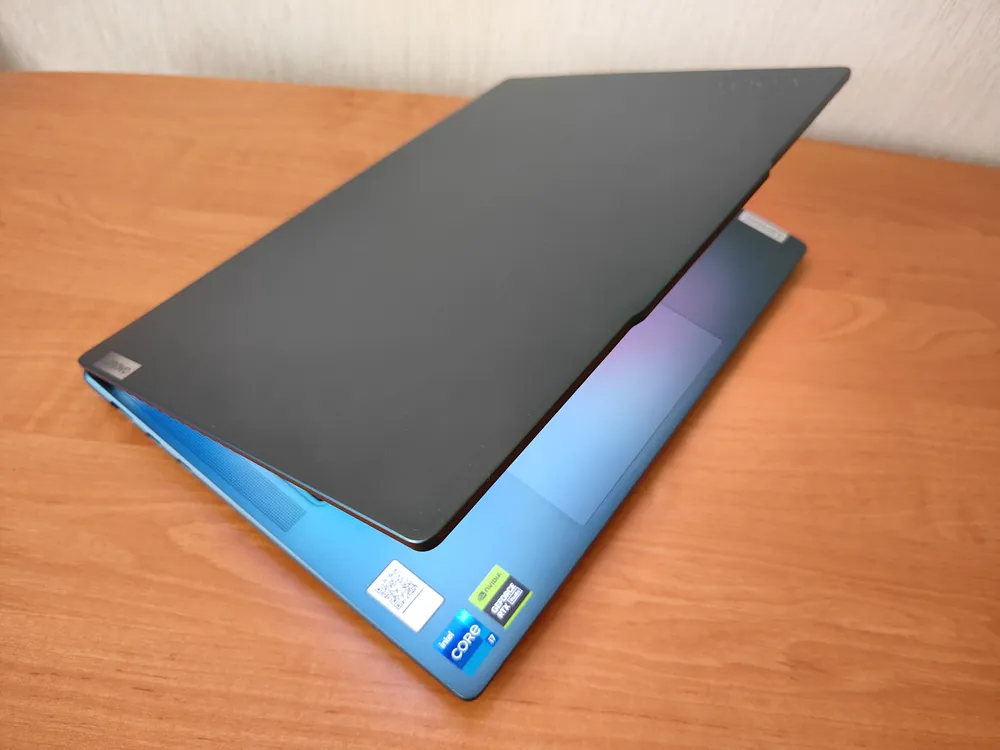
Lenovo Yoga Pro 7 14IRH8 is available in two colours: Storm Grey and Tidal Teal. I can’t say anything about the grey colour, but I really liked the brighter sea turquoise colour of the device I tested. It’s like holding a part of the sea and the sky at the same time.
Let’s move on. The hinge that connects the two halves of the laptop is quite elastic. Although you can open the Lenovo Yoga Pro 7 14IRH8 with one hand, it is not always possible.
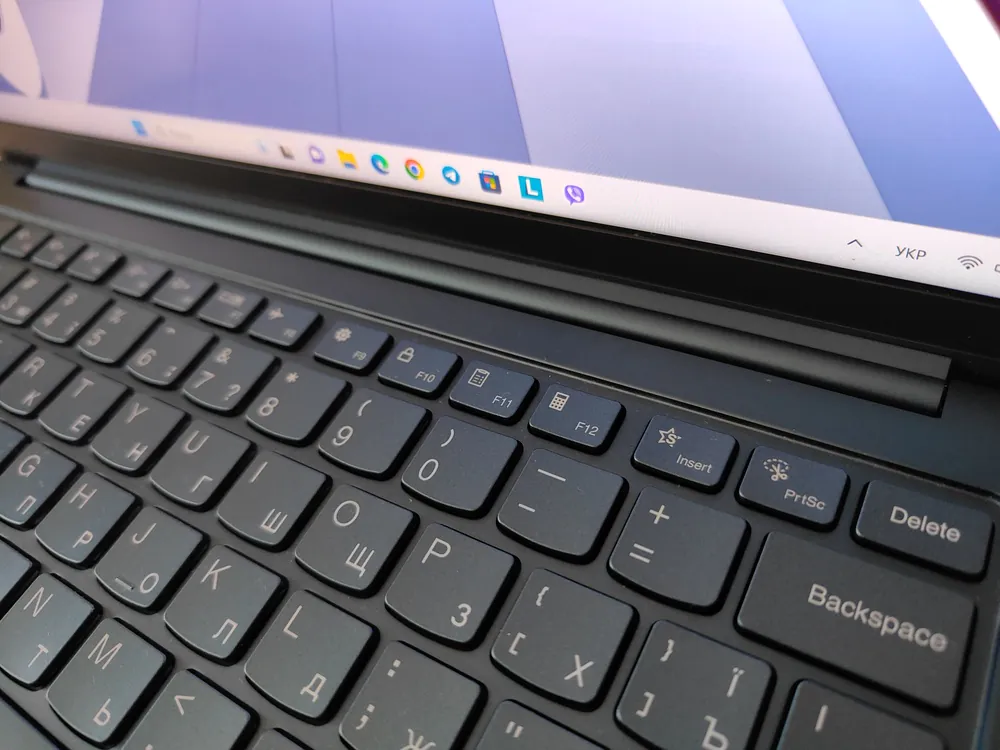
The device can only be rotated “only” 180° and can be conveniently placed in this position on the desktop if necessary. As I mentioned above, this is not a convertible device, so don’t try to fold it in half.
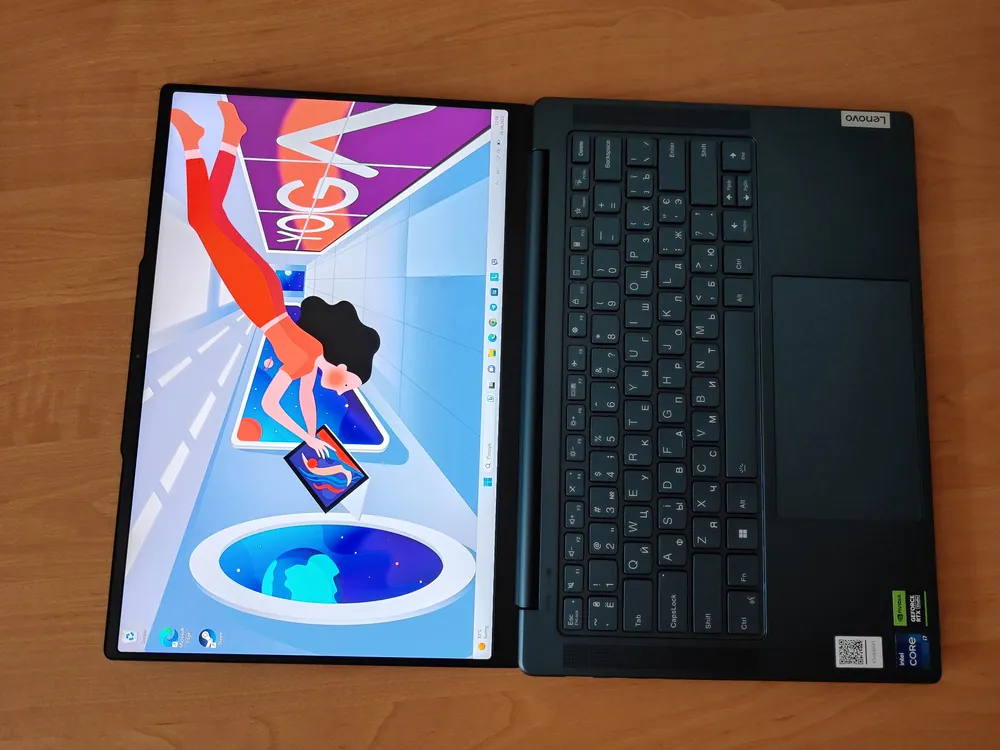
When you open it, you’re greeted by a 14.5-inch screen that takes up almost the entire surface, thanks to the very thin bezels around it. But it’s still a pretty chunky laptop.
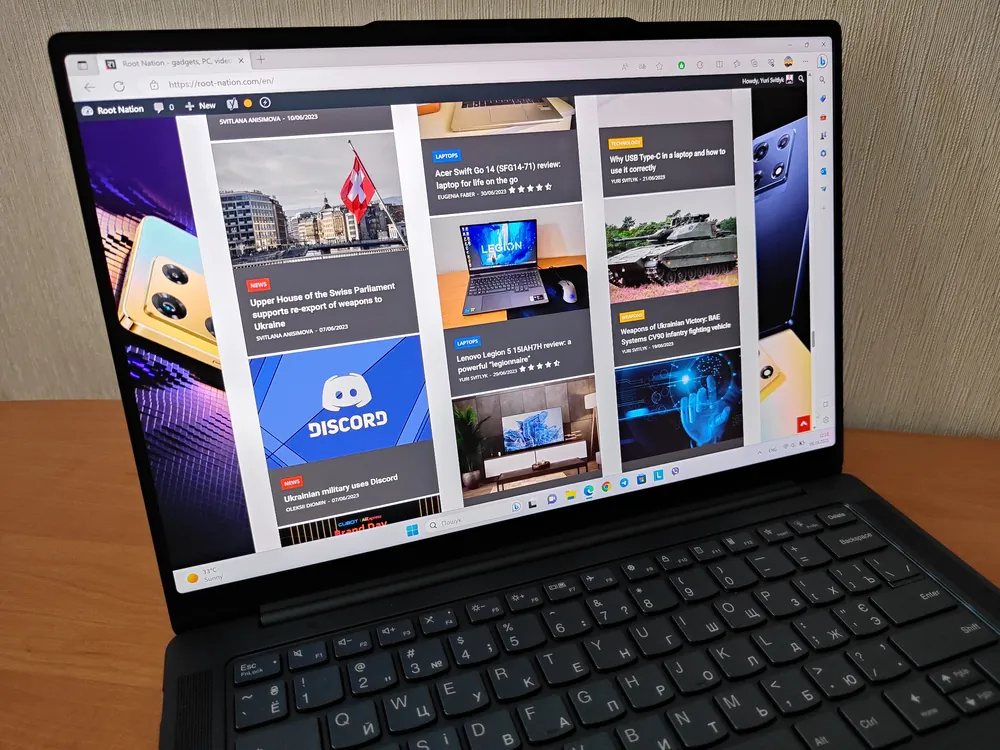
In addition, there is a Full HD webcam with an infrared face recognition scanner and a ToF sensor on the top. This means you have the ability to use your device safely. The laptop can log off or pause the video you are watching when it realises that you are not around. This is very convenient when working in the office and if you are concerned about the safety of your files.

Below is a keyboard, but without a numeric keypad, with speakers on both sides of it. Below the keyboard is a rather large touchpad. I will tell you about them in more detail below, because they are worth it.
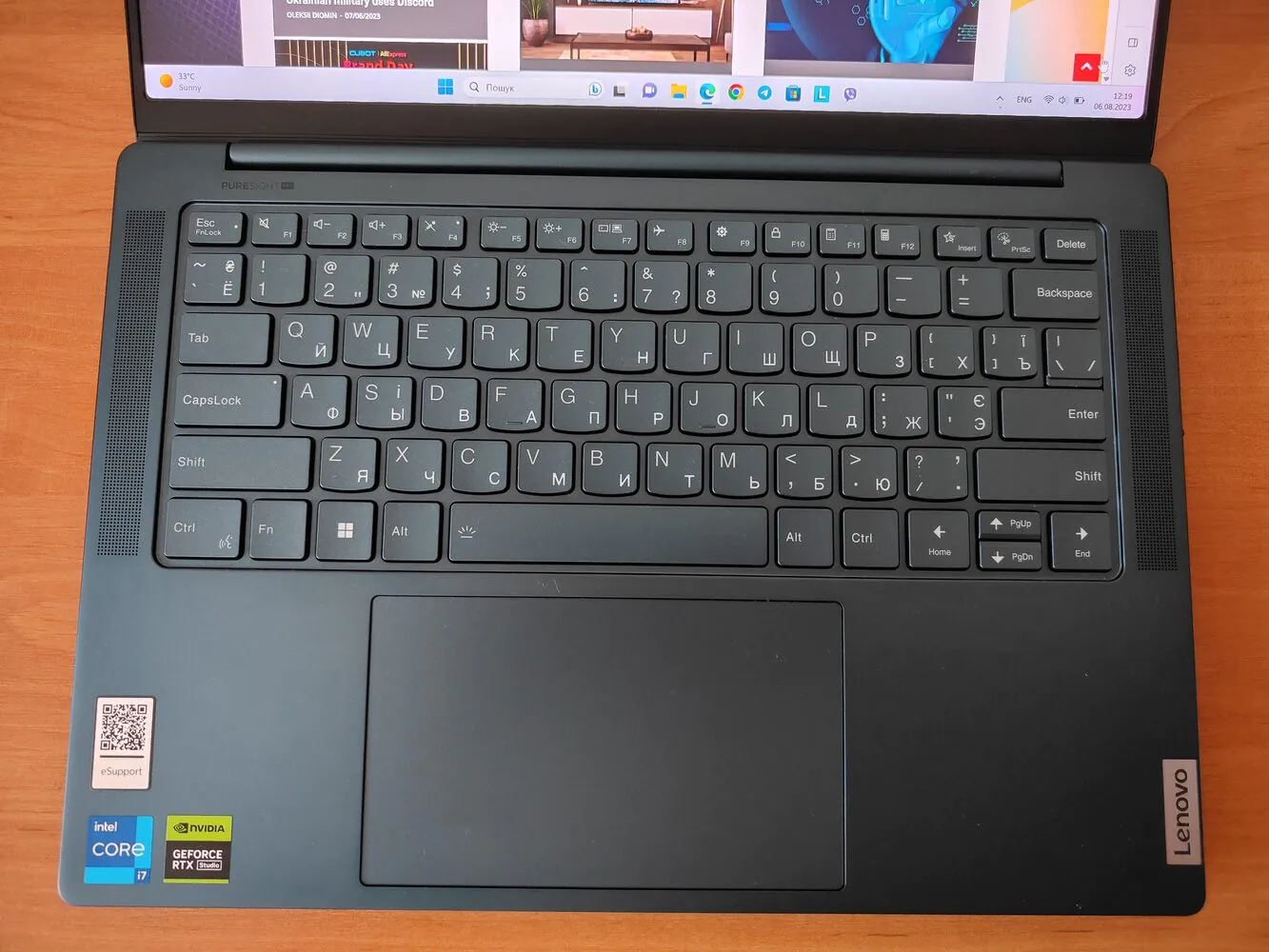
On the back, there are two additional speakers on the sides, as well as a rather large ventilation grille. It helps to remove hot air to the outside between the base and the hinge cover.

The bottom has two rubberised feet in front and one in the back, which extends almost all the way to the back. This allows you to place the laptop securely even on slippery surfaces, and to work comfortably with the device on your lap. This is how I work very often.
Read also: Which Lenovo earphones to choose in 2022?
Lenovo Yoga Pro 7 14IRH8 ports and connectors
Everything is in perfect order here. The dimensions of the device allowed us to place a sufficient number of ports and connectors.
Let’s start with the right side. Here you will find a USB Type-A 3.2 (Gen. 1) port, a combined 3.5 mm audio jack, a power button and an electronic camera shutter switch. The power button takes some getting used to, so that you don’t accidentally switch off the device, as I did several times when trying to move my laptop from place to place. The camera’s electronic shutter switch will be of interest to those who fear for their safety, believing that they may be monitored. Now that’s something you won’t have to worry about anymore.
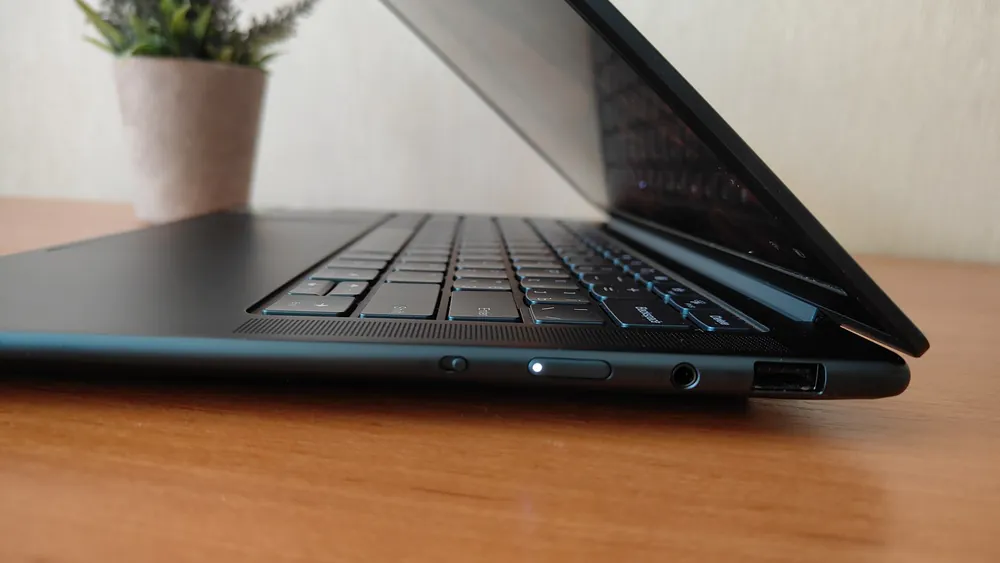
On the left side, the developers have placed an HDMI 2.0 connector, a USB Type-C 3.2 (Gen. 2) port with Power Delivery 3.0 and DisplayPort functions, as well as a USB Type-C 3.2 port with Thunderbolt 4 support, an interface for connecting peripherals to a computer.
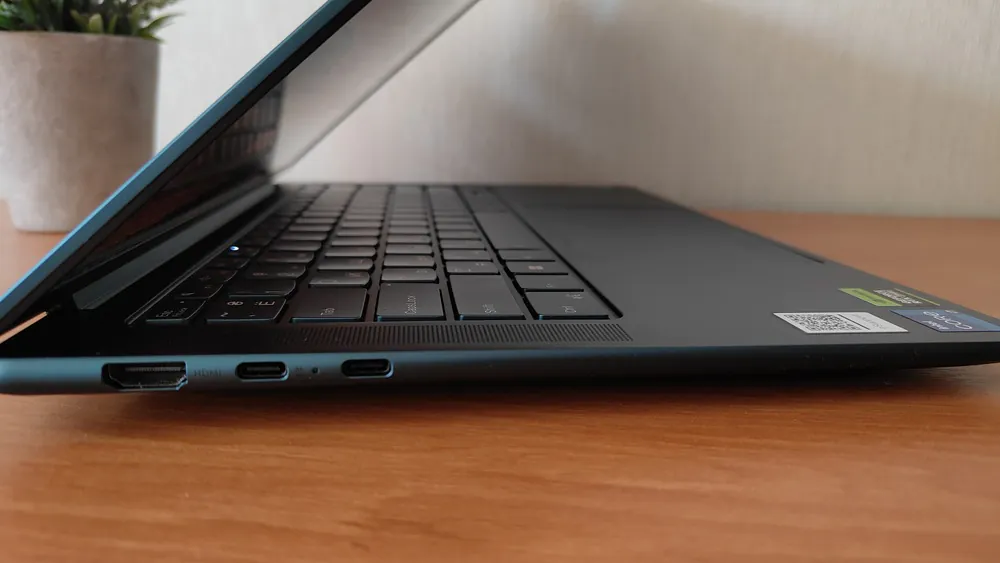
A fairly modern set for Windows mobile devices. It is enough for convenient and efficient work. Maybe more creative users will miss the memory card slot, but this function is becoming more and more specific than everyday. Therefore, you will have to accept it.
Keyboard and touchpad
To be honest, I have an undisguised love for the keyboard of the Lenovo Yoga series of laptops. For some reason, I really like these rounded keys, their convenient location and tactile sensations when pressed. You sit down to work with such a laptop and get great pleasure. But enough of the lyrical digressions.
The working surface has a keyboard and a large touchpad without dedicated buttons. The keyboard is compact with soft membrane keys. That is, Yoga Pro 7 14IRH8 has a keyboard with a traditional Lenovo layout. This is a keyboard typical of ultrabooks – 80 keys without a separate number pad and with multimedia options for F1-F12.
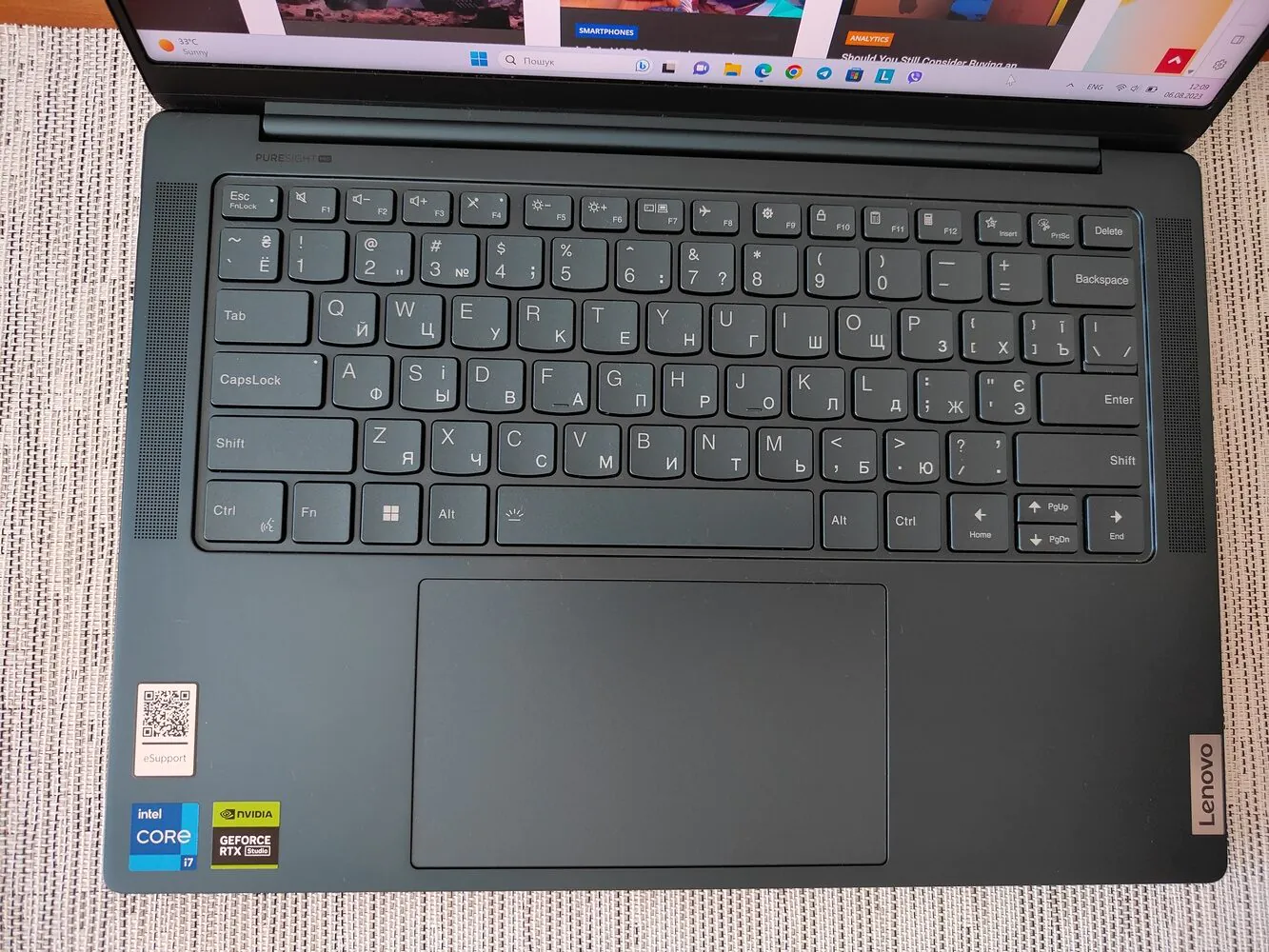 The main buttons have a quite standard size of 16×15 mm with a rounded nearer part of the caps, the distance between them is 3.5 mm, and the button travel is 1.5 mm. Typing on such a keyboard is very comfortable. The process of getting used to it took me about 20 minutes, and then I was typing blindly. My only complaints about the layout are the arrows. Here, the height of the up and down arrows is halved, which is somewhat unusual. Perhaps someone will say that it lacks a digital pad, but in this regard, it’s not sporting to complain about the 14-inch model, although there are no edit keys. The functions of the narrowed top row of buttons (F1-F12 or changing the sound volume, screen backlight brightness, etc.) are switched in the proprietary Lenovo Vantage utility or on the fly by pressing Fn + Esc (Fn Lock).
The main buttons have a quite standard size of 16×15 mm with a rounded nearer part of the caps, the distance between them is 3.5 mm, and the button travel is 1.5 mm. Typing on such a keyboard is very comfortable. The process of getting used to it took me about 20 minutes, and then I was typing blindly. My only complaints about the layout are the arrows. Here, the height of the up and down arrows is halved, which is somewhat unusual. Perhaps someone will say that it lacks a digital pad, but in this regard, it’s not sporting to complain about the 14-inch model, although there are no edit keys. The functions of the narrowed top row of buttons (F1-F12 or changing the sound volume, screen backlight brightness, etc.) are switched in the proprietary Lenovo Vantage utility or on the fly by pressing Fn + Esc (Fn Lock).
The keys have a simple white backlight, the brightness can be changed manually (2 levels + off) by pressing Fn+space, or you can use automatic adjustment depending on the light, which will be successfully combined with automatic screen brightness control.
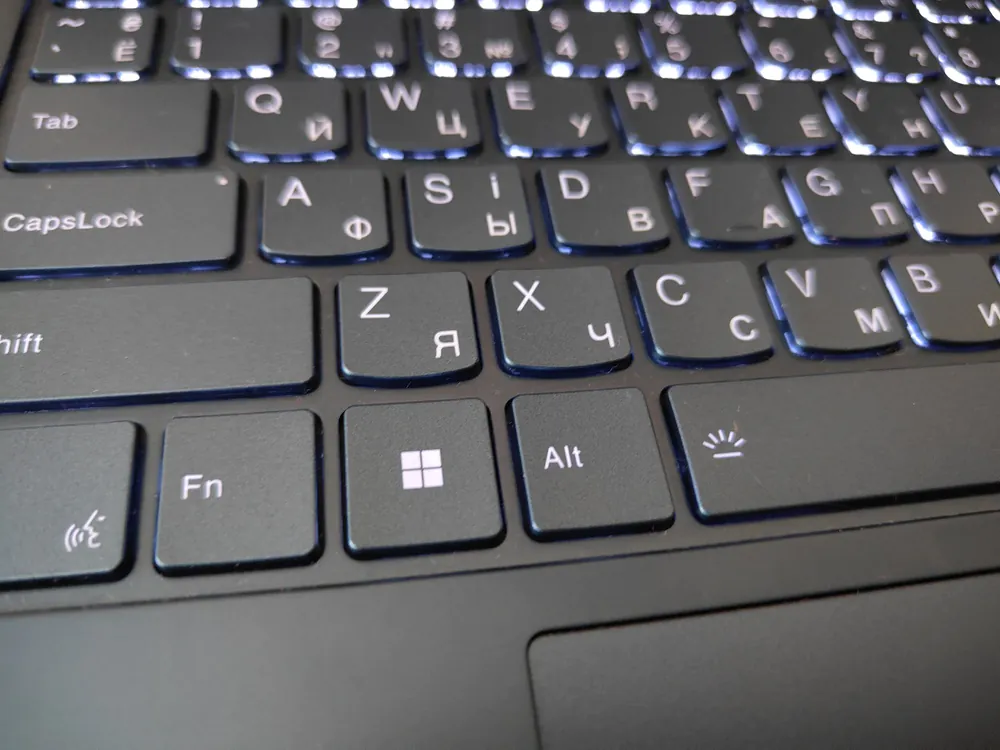
Below the keyboard there is a large 13.5×8.0 cm touchpad with built-in buttons for the right and left mouse buttons. The touchpad has a glass surface, which has a good effect on the ease of use and accuracy of various actions.
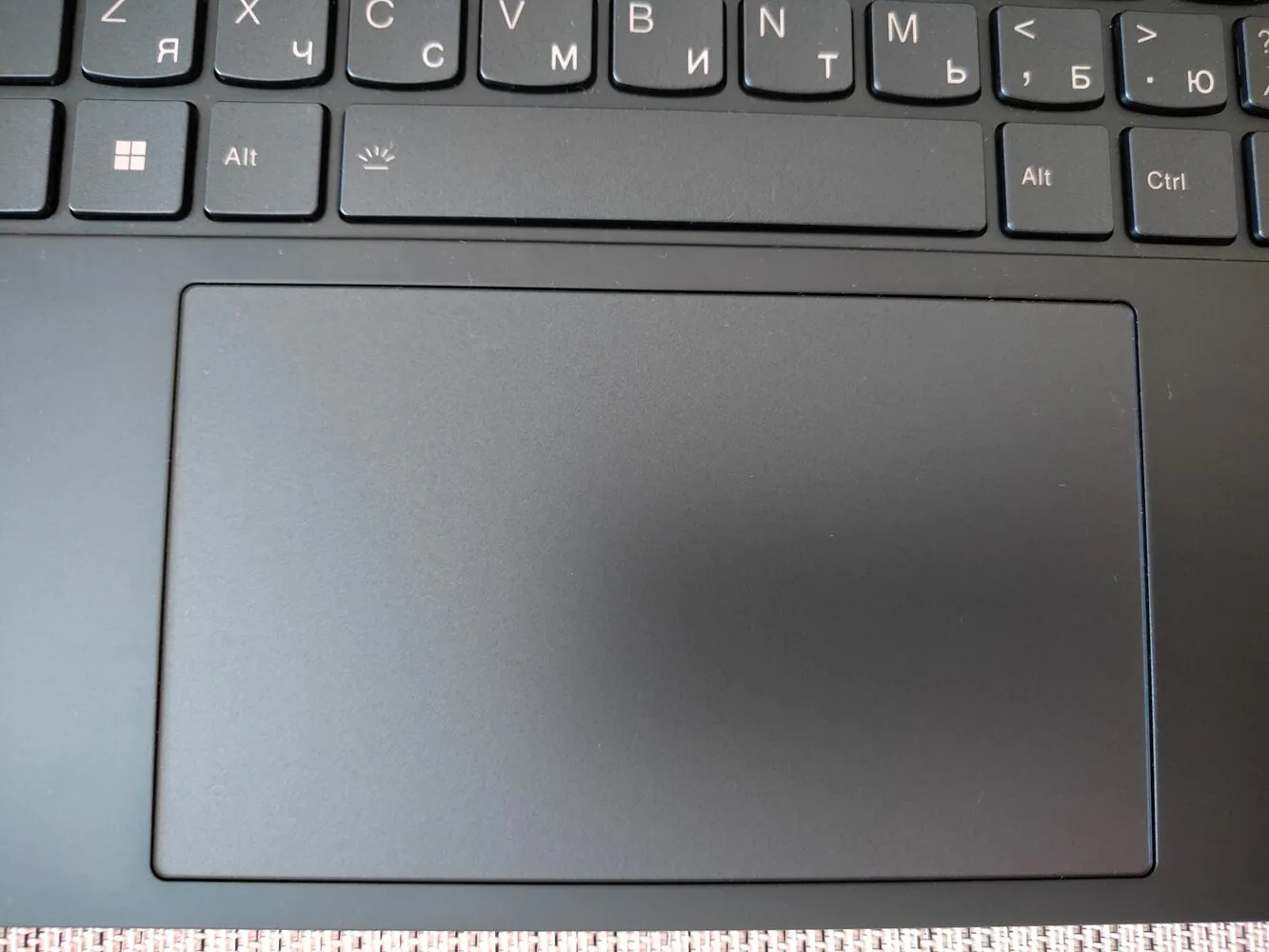
The lower part of the plate slides down a little too much when pressed, which means that the exposed part of the inner case can get dirty over time. The touchpad itself, however, is well optimised. It supports all modern gestures, including scrolling through the contents of a window and calling up the context menu, switching desktops, minimising and maximising windows with two, three or even four fingers, and there is more than enough surface area for this. You can’t quickly disable the touchpad with a keyboard shortcut.
Read also: Not just laptops: review of Lenovo accessories
4 stereo speakers
Manufacturers are increasingly using stereo speakers in modern laptops, and this is very nice, because such devices are becoming more and more multimedia.
Lenovo Yoga Pro 7 laptop uses the capabilities of four 2.0W stereo speakers. Two of them are more acoustic, and the other two are low-frequency.
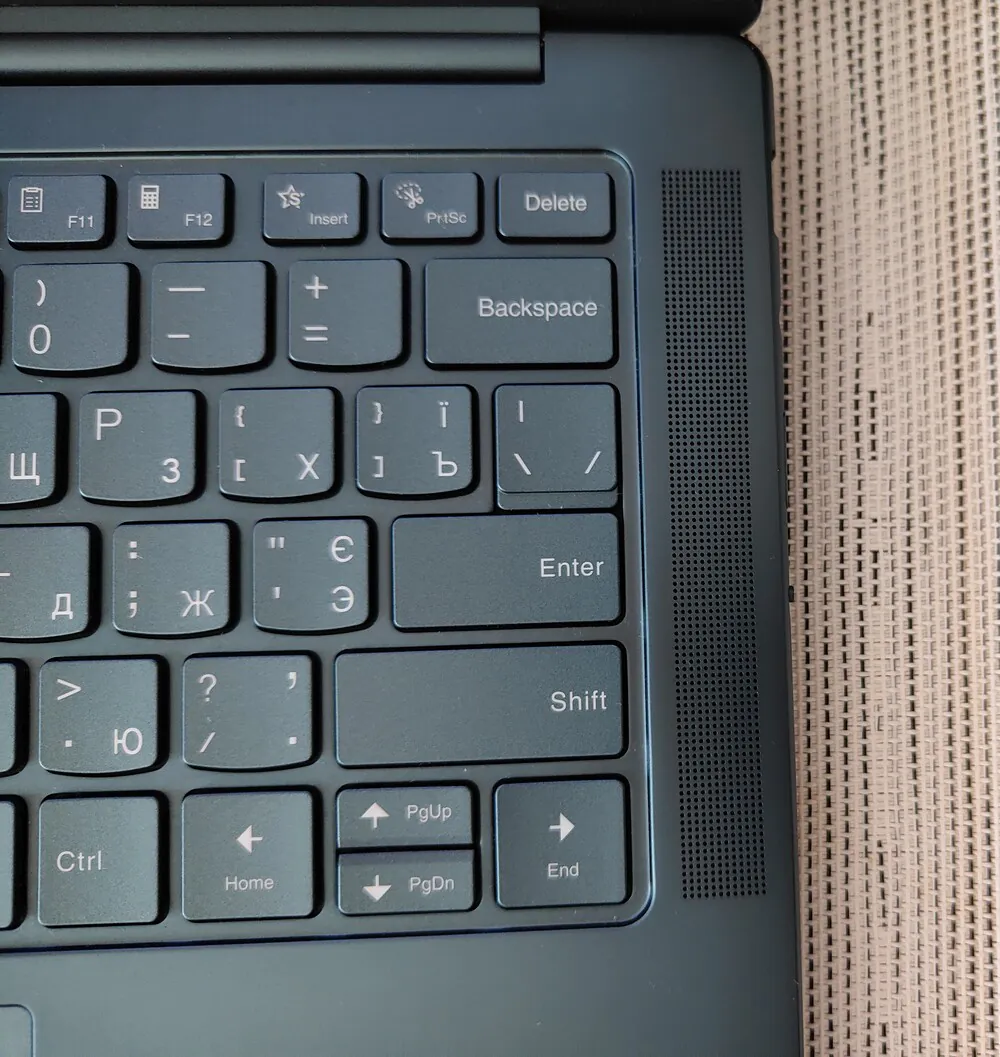
Two of the four speakers are located on the front of the device, to the left and right of the battery, and the other two are located next to the fans and point upwards.
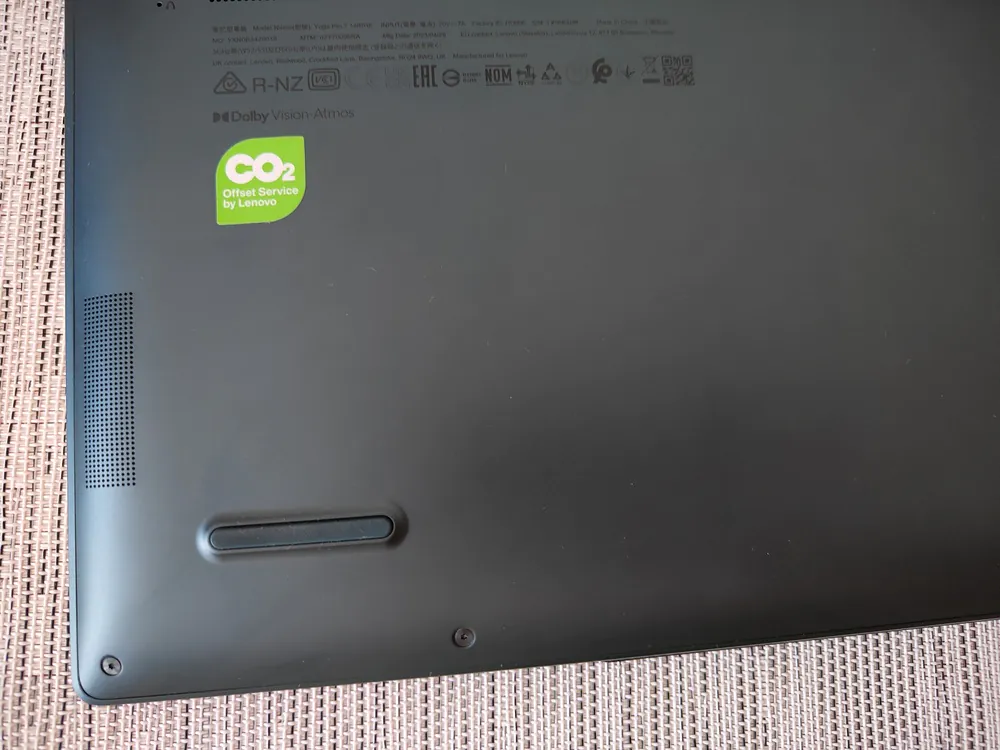
This means that the sound coming out of them passes through an elongated grille located above the keyboard. The audio system supports the Dolby Atmos spatial format, so we can count on above-average sound quality, where lower tones also come to the fore. The sound is very strong and loud from the speakers (this applies to both normal sounds and conversations), making it ideal for gaming, as well as listening to music and watching movies and TV shows. We also have access to a single 3.5mm audio jack combo.
I liked the sound of the Lenovo Yoga Pro 7 stereo system. It is often enough even to listen to music from Spotify, which is quite a high score. Although, perhaps, I lacked bass and more detailed sound.
Read also:
High-quality display with a refresh rate of 120 Hz
When you switch on the laptop, it’s impossible not to notice the very high-quality screen with narrow bezels around it. I even thought at first that it also has MiniLED backlighting, like its older comrade Lenovo Yoga Pro 9, but it doesn’t.
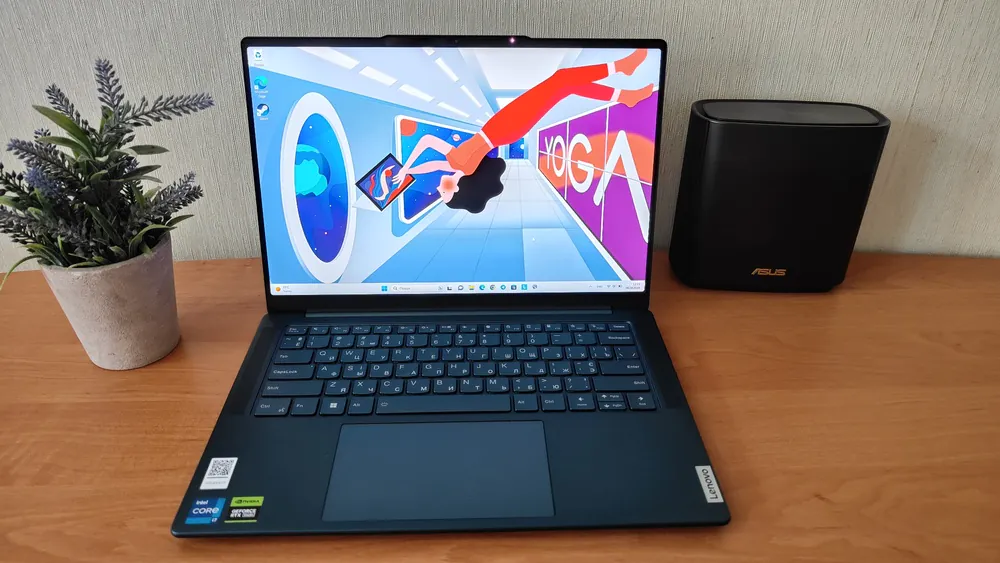
Lenovo Yoga Pro 7 14IRH8 received a matrix of its own production LEN145-3K (at least, that’s what the parameters indicate). The screen has a diagonal of 14.5″ with a resolution of 3072×1920 pixels at 120 Hz, full DCI-P3 coverage and has a matte finish. It is made using IPS technology, so the viewing angles are wide, both vertically and horizontally. In addition, the screen aspect ratio is 16:10, the pixel density is 250 ppi, and the pixel pitch is 0.1×0.1 mm. The 16:10 aspect ratio is better suited for consuming multimedia or Internet content. Thanks to the vertically enlarged screen, the developers managed to significantly reduce the bottom bezel, which, combined with the characteristic hinges under the screen, makes it possible to ignore the bezel.

Lenovo claims a display brightness of 400 cd/m², and our test device, with an average of ~450 cd/m², even surpasses this figure. The correlated colour temperature on a white screen and at maximum brightness is 6350K.
The dE2000 value should not be higher than 4.0, and this parameter is one of the first things you should check if you are going to use the laptop for colour-sensitive work (maximum tolerance is 2.0). The contrast ratio is 1500:1.
The display has 100% sRGB/ITU-R BT.709 (web/HDTV standard) coverage in CIE1976 and 99% DCI-P3, delivering an extremely bright and attractive image.
Pulse Width Modulation (PWM) is an easy way to control the brightness of your monitor. When you turn down the brightness, the light intensity of the display does not decrease, but is switched on and off electronically at a frequency that the human eye cannot see. In these light pulses, the ratio of light/no light time changes while the brightness remains the same, which is harmful to your eyes. Unfortunately, the Lenovo Yoga Pro 7 14IRH8 display does not use PWM to adjust the brightness.

In practice, we have a very high-quality 3K screen with a refresh rate of 120 Hz. It is quite bright, with good viewing angles. It is very pleasant to work on such a display. Of course, I would like to see an OLED display, which is becoming more and more popular in such devices, or at least MiniLED backlighting.
Read also:
High performance: 13th generation Intel processor and nVIDIA GeForce RTX 4050
Despite its compact dimensions and light weight, Lenovo Yoga Pro 7 14IRH8 is powered by the latest 13th generation Intel Raptor Lake processor of the productive H-series. The 13th generation processors use two types of cores – Performance (Raptor Cove architecture), where the core has been significantly rebuilt, making additional changes compared to the Alder Lake and Golden Cove cores (for example, modification of the cache subsystem).
The energy-efficient Performance Cores are also complemented by the more energy-efficient Efficient Cores, which offer x86-level IPC from the 10th generation Comet Lake while consuming significantly less power than the larger Performance Cores.
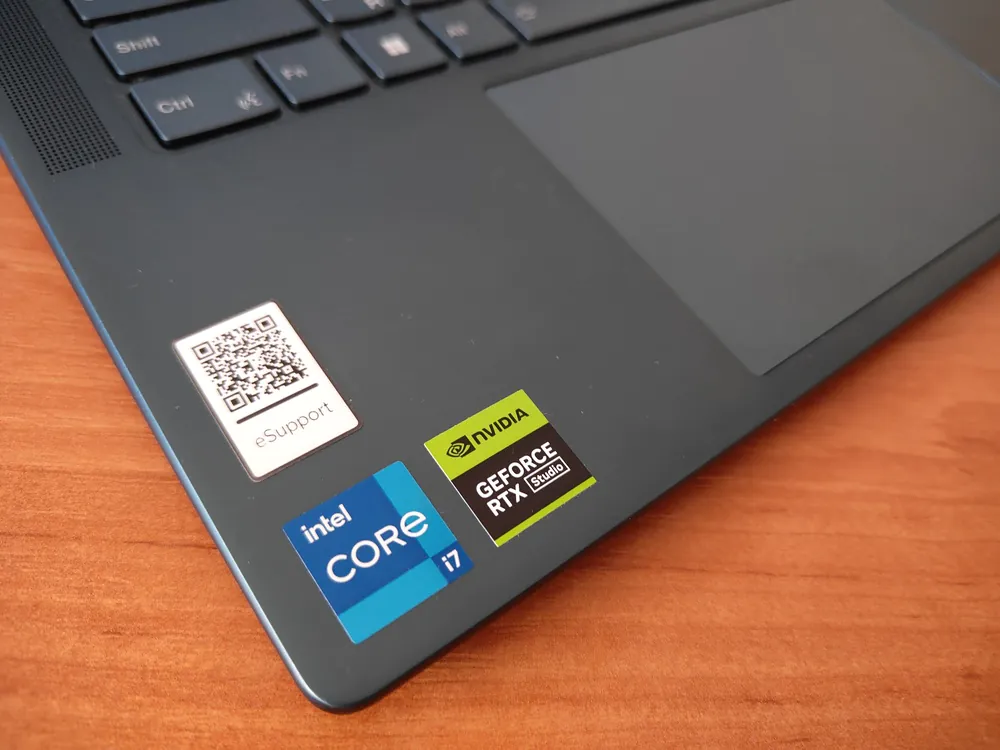 In the tested configuration, it is an Intel Core i7-13700H. The processor is manufactured using the Intel 7 process technology, has a TDP of 45 W and a cache of 24 MB. The configuration of cores includes 6 productive cores with a frequency of 2.4-5 GHz and 8 energy-efficient cores with a frequency of 1.8-3.7 GHz. There is support for multi-threaded computing: up to 20 threads.
In the tested configuration, it is an Intel Core i7-13700H. The processor is manufactured using the Intel 7 process technology, has a TDP of 45 W and a cache of 24 MB. The configuration of cores includes 6 productive cores with a frequency of 2.4-5 GHz and 8 energy-efficient cores with a frequency of 1.8-3.7 GHz. There is support for multi-threaded computing: up to 20 threads.
The processor also offers a rebuilt cache subsystem, offering, for example, 30 MB of L3 cache and 14 MB of L2 cache. Intel Core i7-13700H supports not only the Thunderbolt 4 platform, but also PCIe 4.0, memory types: DDR4 3200 MHz, DDR5 4800 MHz and LPDDR5 5200 MHz, 10-bit H.265 HEVC codec that supports 4K and offers compatibility with Microsoft PlayReady 3 DRM, which is used to play 4K content, and the AV1 codec with greater efficiency than HEVC.
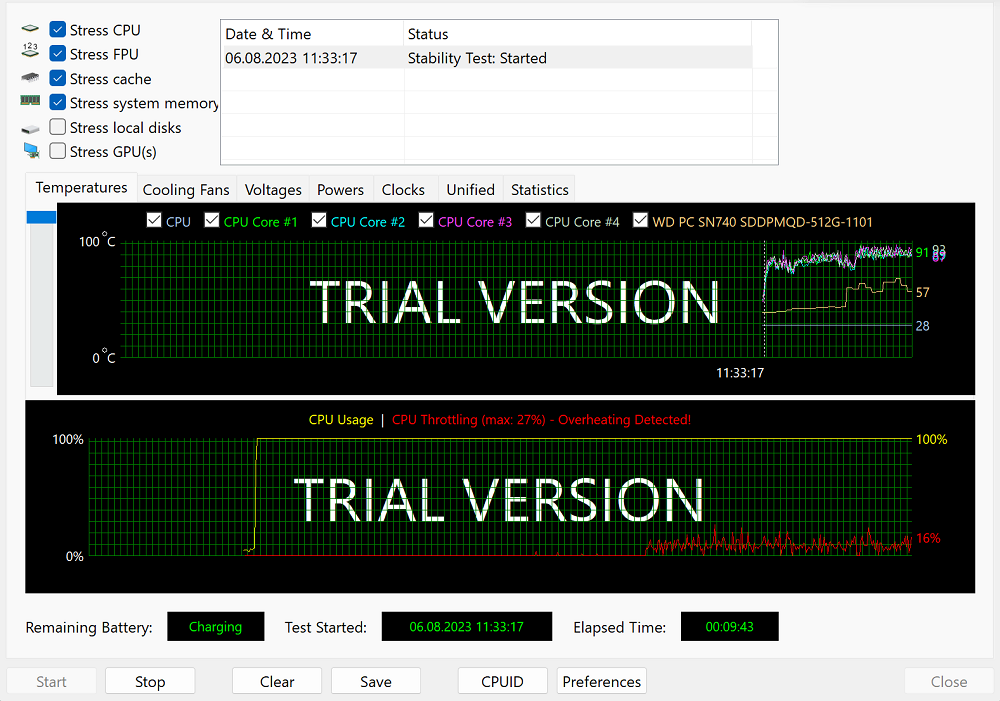 Synthetic benchmarks indicate that we are dealing with a fairly powerful new generation processor that will ensure comfortable operation of the laptop.
Synthetic benchmarks indicate that we are dealing with a fairly powerful new generation processor that will ensure comfortable operation of the laptop.
Lenovo Yoga Pro 7 14IRH8 has two graphics cards. The built-in Intel Iris Xe has 96 executive units, the maximum frequency can reach 1800 MHz. Intel Iris Xe Graphics is a redesigned graphics chip from the manufacturer. The completely rebuilt graphics system now delivers twice the performance in selected games and is a true multimedia combine. It supports not only HEVC or VP9 codecs, but also the latest version of AV1. There is also support for HDR technology and an extended format in the form of Dolby Vision. The new Intel Iris Xe Graphics is available in two forms – with 80 and 96 active units. In addition, we have the Intel ARC A370M graphics chip based on the full ACM-G11 chip and Xe-HPG architecture.
And the discrete graphics are provided by the NVIDIA GeForce RTX 4050 Laptop graphics chip with a TGP of up to 45W in this case. This GPU is the weakest representative of the Ada Lovelace architecture that was introduced for laptops. We get a stripped-down AD107 core with 2560 CUDA FP32 cores, 20 Gen 3 RT cores, and 80 Gen 4 Tensor cores. The Ada Lovelace architecture itself is the same for desktops and laptops. Thus, we get more powerful CUDA cores, rebuilt RT cores to accelerate ray tracing, and new Tensor cores with support for Frame Generator and Optical Flow Accelerator. In the basic version, the GPU operates at a frequency of 1455 MHz, which can be increased to 1755 MHz. The amount of video memory is 6 GB of GDDR6 on a 96-bit bus.
It should be noted that this video card is not the best option for gaming, but it is quite enough for working with graphics and video in most cases. This is exactly what the laptop was designed for, which is confirmed by the NVIDIA Studio drivers installed on the laptop.
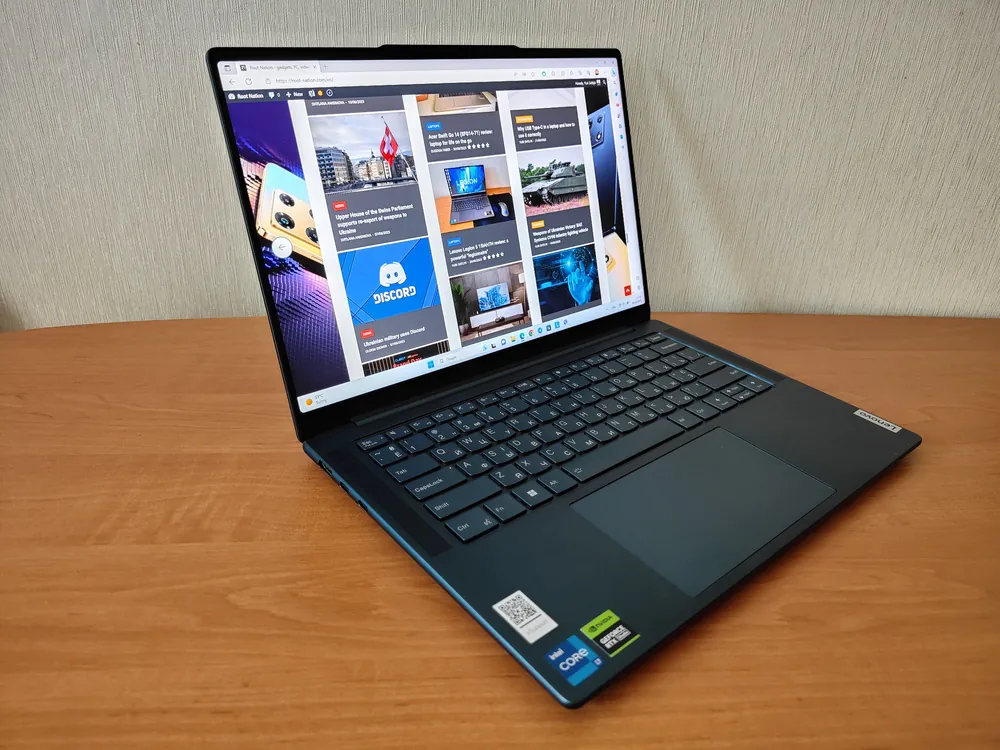
The tested device is equipped with 1 Samsung LPDDR5 memory slot with a maximum frequency of 5200 MHz and a total capacity of 16 GB. It’s soldered to the motherboard, so you won’t be able to expand it, but this amount is enough for comfortable work. The laptop easily copes with its tasks.
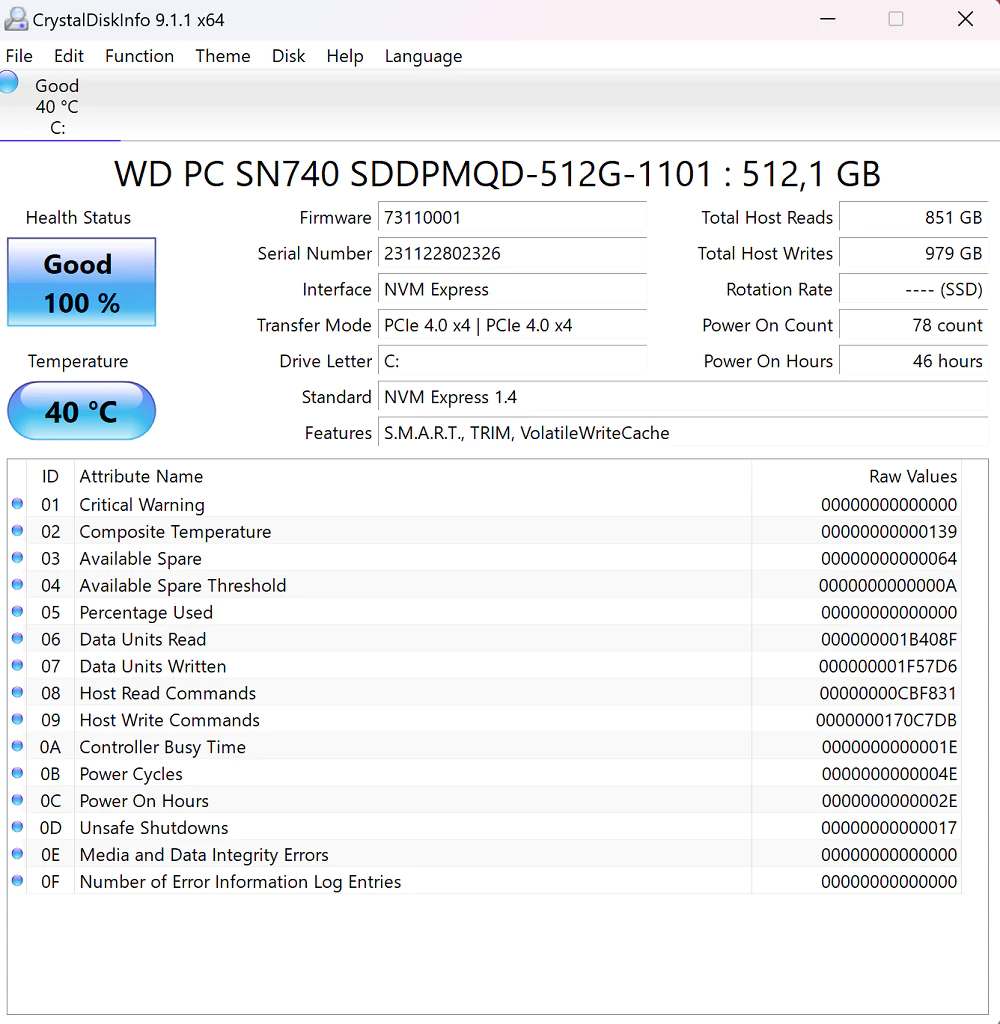 The WD PC SN740 SDDPMQD-512G-1101 SSD module with NVMe M.2 2280 PCIe Gen4 TLC controller has a 512GB capacity. Thanks to its 13th generation processor, i.e. PCI Express 4.0 x4, it achieves approximately twice the transfer speed of laptops with previous 12th generation processors. The standardised size (physical) 2280 module is indispensable. That is, there is no room for another module in the laptop. However, such drive parameters mean not only very fast system startup and almost instant opening of applications, but also efficient copying and moving of even large files. This is a drive worthy of a high-end computer, no doubt about it.
The WD PC SN740 SDDPMQD-512G-1101 SSD module with NVMe M.2 2280 PCIe Gen4 TLC controller has a 512GB capacity. Thanks to its 13th generation processor, i.e. PCI Express 4.0 x4, it achieves approximately twice the transfer speed of laptops with previous 12th generation processors. The standardised size (physical) 2280 module is indispensable. That is, there is no room for another module in the laptop. However, such drive parameters mean not only very fast system startup and almost instant opening of applications, but also efficient copying and moving of even large files. This is a drive worthy of a high-end computer, no doubt about it.
The top-of-the-line Intel Wi-Fi 6E AX211 160 MHz is used as a wireless adapter, which can be found mainly in expensive gaming models. It supports 802.11 a/b/g/n/ac/ax standards, 2X2 MU-MIMO technology, and has Bluetooth 5.1.
Read also: ASUS RT-AX88U Pro review: power in an attractive case
But what about in practice?
I liked the work culture of the Lenovo laptop. I did not have any problems during the entire testing period. The Lenovo Yoga Pro 7 14IRH8 is ready for even the most demanding tasks, work with photo and video content, or even gaming.
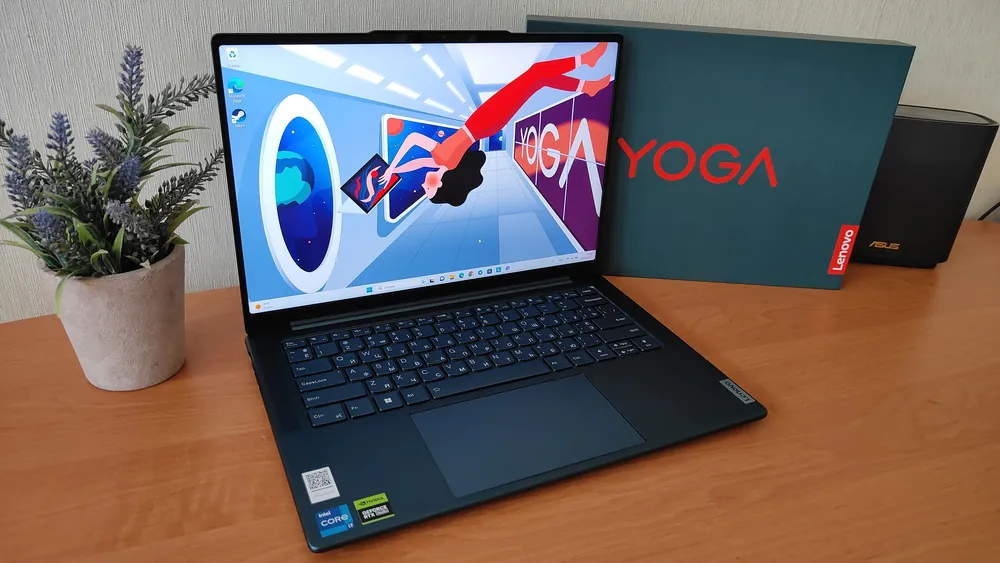
As for games, there were no disappointments, and the results of FPS measurements are more or less similar to those of competitors. Not everywhere you will be able to get more than 60 frames at high graphics settings and full resolution, but this is a question for a specific set of games of an individual user. Yes, you may have to give up a little in graphics somewhere, but the components here are not the most powerful. In any case, for example, for multiplayer shooters, I had enough.
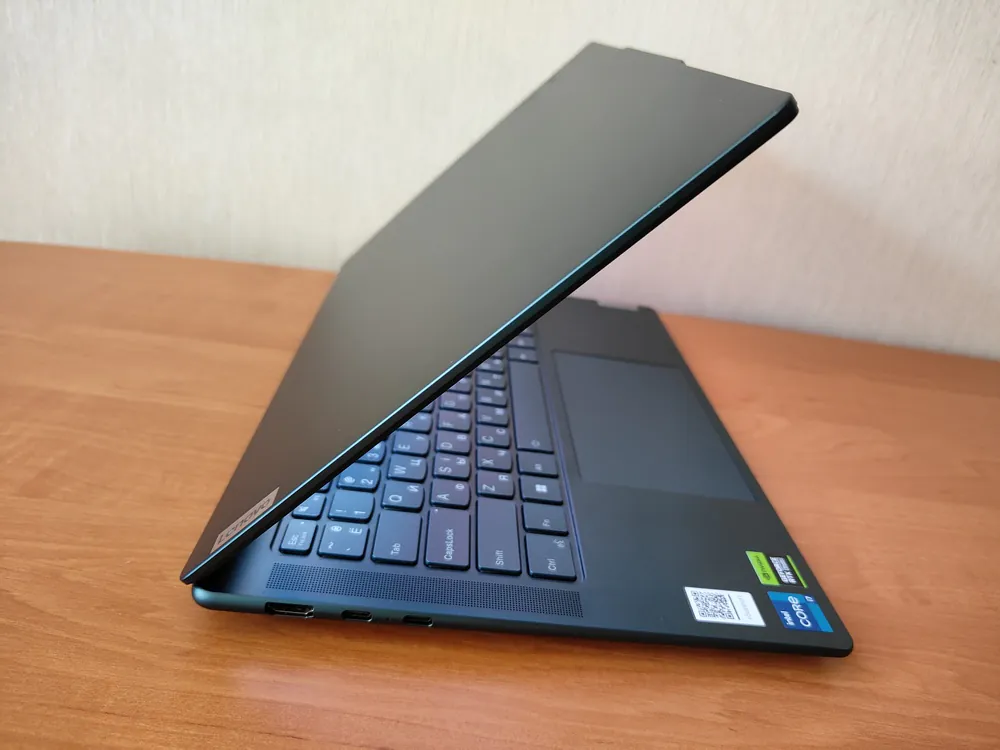
Lenovo Yoga Pro 7 14IRH8 has two fans. They are enough to keep the temperature within 68°C under load and prevent trotting. This creates an acceptable noise level during extreme workloads or gaming. In addition, the maximum temperature on the keyboard is not too high. This is quite good for such a set of coolers. Although under load, you will still feel some temperature rise, and this may not be something everyone likes when choosing a laptop.
Read also: ASUS Zenbook 14 OLED (UX3402) review: ultra-portable, stylish and powerful
Lenovo Yoga Pro 7 14IRH8 battery life
The Yoga Pro 7 comes with a 73Wh battery, which, combined with all the optimisations that have been made, delivers impressive results. This is a pretty big battery, especially considering the fact that Lenovo Yoga Pro 7 is a thin device. The manufacturer promises that this capacity will provide up to 10 hours of operation without recharging. Considering the laptop’s specifications, this is quite good.

In reality, I managed to get about 9 hours. This battery life was associated with regular workloads such as document work, web browsing, music streaming, and occasional YouTube viewing throughout the day. But during gameplay, be prepared to reach for the charger after almost 1.5 hours. Although in this case it is better to keep the laptop plugged in.
The bundled USB Type-C charger is a great way to keep your laptop with you in your backpack or bag all day long.
Read also:
- All about USB standards and specifications
- Review of OfficePro stands: for laptops and tablets
- Bluesky phenomenon: what is the service and how long will it last?
Conclusions
We are dealing with a modern and very attractive laptop that should be of interest to a wide range of business customers. The device impresses not only with its design, but also with the use of a new powerful processor with a rather interesting nVIDIA GeForce RTX 4050 graphics chip. It is this combination that will allow you to feel the premium quality of the Lenovo Yoga Pro series.
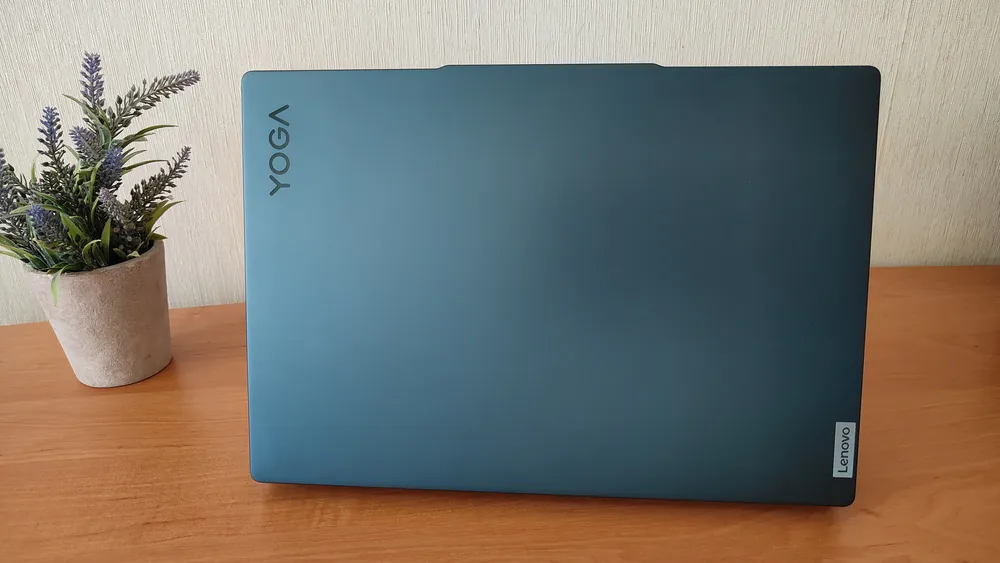
On the positive side, we should also note the high quality of materials and the build quality of the case, which is distinguished by good strength and rigidity. You can also add a decent filling, an interesting set of ports and low-voltage components that do their job well.
Of course, we can mention the high heat of the processor and the laptop case, which may be a little worrying for potential buyers, as well as the unsoldered RAM, but these small nuances seem insignificant against the backdrop of the compactness, power and elegance of this ultrabook. If you’re looking for a powerful and compact device, the Lenovo Yoga Pro 7 is a worthy choice.



